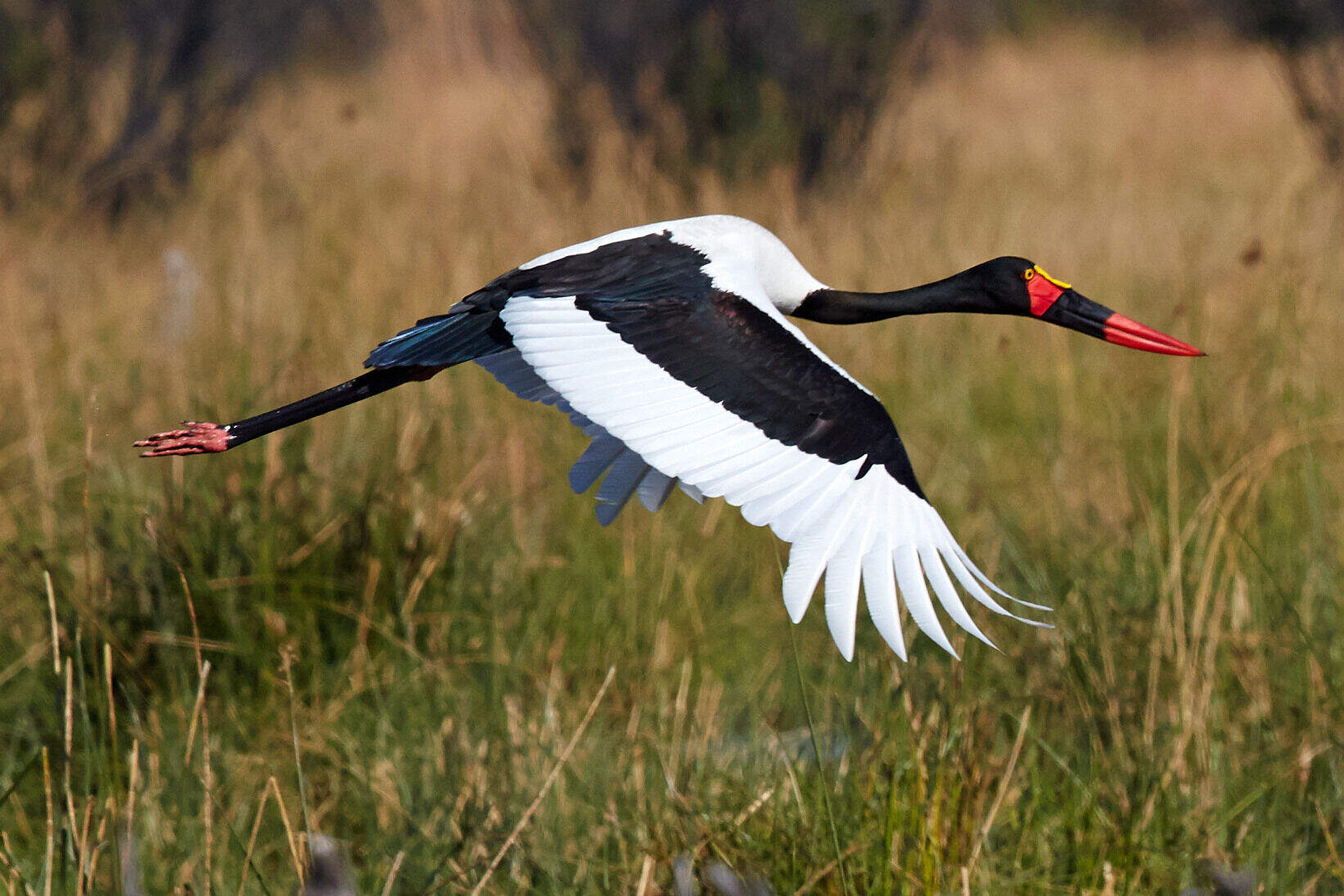Some excellent places for birdwatching in Botswana
The Okavango Delta is perhaps the ultimate destination for birding in Botswana. Best visited after the rains, around October, enthusiasts may seek the slaty egret, wattled crane and lesser jacana. Elsewhere, Chobe National Park and the vast expanses of largely undisturbed wilderness are also suitably commendable for keen birders.
Herons and larks are two well-represented bird families found in Botswana. Although it has no endemic bird species, birders in Botswana will often seek out several specialities of note, including: groups of southern pied-babblers and hartlaub's babblers; swamp boubou; brown fire finch; and melodious larks.
Pangolin Safari
8 days • 3 locations
MAUN AIRPORT TO MAUN AIRPORT
US$9,730 - US$16,340 per person
Kwara Camp
The environment at Kwara Camp is incredibly diverse, resulting in superb birdwatching. Seasonal floodplains and wooded islands surround camp, while papyrus-lined waterways, lagoons, mopane woodland and scrub savannah are all easily accessible.
Lebala Camp
Situated in the huge, remote Kwando Concession of the Linyanti, Lebala Camp has access to mopane forests, lush riverine forest and open floodplains attracting an incredible range of bird species. Raptors such as eagles and vultures thrive here.
Lagoon Camp
Drives from Lagoon Camp cover riverine, savannah and mopane-dominated areas – while boat trips bring great views over papyrus reedbeds. Colonies of carmine bee-eaters may enhance your birdwatching from mid-September to early December.
Reedbuck Safari
8 days • 3 locations
MAUN AIRPORT TO MAUN AIRPORT
US$23,410 - US$36,280 per person
Mombo Camp
The fertile soils around Mombo make for nutrient-rich vegetation resulting in excellent birding. With so much game around, vultures abound and birds of prey also find easy pickings whilst the wetter extremities have a different set of species again.
Vumbura Plains
Ranging from open floodplains to dense mopane bushveld, Vumbura Plains has wonderful birding opportunities all year round. Species you are likely to encounter include wattled crane, slaty egret, chirping cisticola and possibly rosy-throated longclaw.
Zarafa Camp
Zarafa Camp is situated close to the Zibadianja Lagoon which is known for its colony of African Skimmers. Each tent comes with its own pair of Swarovski binoculars - a massive boon for anyone with a keen interest in birds.
Bushbuck Safari
8 days • 3 locations
MAUN AIRPORT TO MAUN AIRPORT
US$18,020 - US$31,740 per person
Chitabe Lediba
Approximately 345 species have been recorded in the Chitabe concession, comprising both resident and migratory birds. Raptors are abundant and thrive here. Of particular note on Chitabe are breeding wattled crane and slaty egret.
Little Vumbura
Little Vumbura is a first-rate camp for birdwatching in Botswana. From shallow and deepwater floodplains and channels to dense, shady woodlands, our sightings have included swallowtail bee-eaters, Pels fishing owls, white-backed ducks, brown firefinches, slaty egret and rufus-bellied herons.
DumaTau
Birding is outstanding at Duma Tau. There is a diversity of habitats which in turn attracts a variety of species ranging from waterbirds to the drier mopane woodland species. The Savute Channel has a high concentration of eagles and raptors.
Honey Badger Safari
6 days • 2 locations
MAUN AIRPORT TO MAUN AIRPORT
US$7,410 - US$10,800 per person
Kwara Camp
The environment at Kwara Camp is incredibly diverse, resulting in superb birdwatching. Seasonal floodplains and wooded islands surround camp, while papyrus-lined waterways, lagoons, mopane woodland and scrub savannah are all easily accessible.
Tau Pan Camp
Even though the central Kalahari is largely a semi-desert it is home to a surprisingly high number of bird species. The best time of year for birding is the summer when the rain falls and resident birds are joined by migratory species.
Steenbok Safari
9 days • 3 locations
MAUN AIRPORT TO MAUN AIRPORT
US$8,920 - US$13,480 per person
Savute Under Canvas
The Savuti Marshes are renowned for birdlife densities, particularly from mid-December to March, when flocks of yellow-billed storks, African spoonbills and pink-backed pelicans make this a great time for birdwatching in Botswana.
Pelo Camp
Located in the Jao Concesion, birding is exceptional at Pelo Camp. Birds typical of wetlands such as wattled crane and lesser jacana are found on the eastern side, with the western drier areas hosting woodland species such as Dickinson Kestrel.
Machaba Camp
Machaba Camp is located in the Khwai Community Reserve. The camp is built in riverine forest on the edge of the Khwai River. The Moremi Game Reserve, the floodplains of the Khwai River and mature woodland are all home to a good variety of species.
Wildcat Safari
4 days • 2 locations
MAUN AIRPORT TO MAUN AIRPORT
US$9,700 - US$17,570 per person
Selinda Camp
Selinda Camp's location on the Selinda Spillway is an excellent place for birdwatching. Many waterbird species, like cranes, herons, kingfishers and cormorants, can be viewed here and eagle and vulture populations are healthy.
Duba Plains Camp
Duba Plains is located deep in the Okavango among a matrix of palm-dotted islands, floodplains and woodland. Birders in Botswana will find a rich and varied birdlife, with good numbers of typical Okavango specials such as Pel's fishing owl, slaty egret and wattled crane.
Large-spotted Genet Safari
9 days • 3 locations
MAUN AIRPORT TO MAUN AIRPORT
US$14,230 - US$23,640 per person
Chitabe Lediba
Approximately 345 species have been recorded in the Chitabe concession, comprising both resident and migratory birds. Raptors are abundant and thrive here. Of particular note on Chitabe are breeding wattled crane and slaty egret.
Savuti Camp
For birdwatchers in Botswana, Savuti Camp can be outstanding, ranging from Okavango species to those of the drier mopane woodland. The Savuti Channel has a high concentration of raptors and is internationally recognised as an Important Bird Area.
Aardwolf Safari
5 days • 2 locations
MAUN AIRPORT TO MAUN AIRPORT
US$5,830 - US$9,430 per person
Machaba Camp
Machaba Camp is located in the Khwai Community Reserve. The camp is built in riverine forest on the edge of the Khwai River. The Moremi Game Reserve, the floodplains of the Khwai River and mature woodland are all home to a good variety of species.
Porcupine Safari
11 days • 4 locations
MAUN AIRPORT TO MAUN AIRPORT
US$11,780 - US$16,860 per person
Tau Pan Camp
Even though the central Kalahari is largely a semi-desert it is home to a surprisingly high number of bird species. The best time of year for birding is the summer when the rain falls and resident birds are joined by migratory species.
Machaba Camp
Machaba Camp is located in the Khwai Community Reserve. The camp is built in riverine forest on the edge of the Khwai River. The Moremi Game Reserve, the floodplains of the Khwai River and mature woodland are all home to a good variety of species.
Spotted-necked Otter Safari
6 days • 2 locations
MAUN AIRPORT TO MAUN AIRPORT
US$9,950 - US$14,800 per person
Savuti Camp
For birdwatchers in Botswana, Savuti Camp can be outstanding, ranging from Okavango species to those of the drier mopane woodland. The Savuti Channel has a high concentration of raptors and is internationally recognised as an Important Bird Area.
1 of
Our most recent reviews of Birdwatching in Botswana
Detailed, un-edited reviews from our Botswana travellers whose trips we tailored towards birdwatching. Click below to read the traveller's full review, and see all the reviews of our Botswana safari holidays here.
Arrived 12 Apr 2025, 14 nights
"Our fantastic Botswana Safari April 2025!"
Overall rating: Excellent
Arrived 12 Apr 2025, 14 nights
"Our Apr 2025 Botswana trip was fantastic! "
Overall rating: Excellent
Arrived 3 Apr 2025, 17 nights
"My Apr 2025 trip"
Overall rating: Excellent
Arrived 25 Feb 2025, 17 nights
"My Feb 2025 trip"
Overall rating: Excellent
Arrived 16 Feb 2025, 6 nights
"My Feb 2025 trip"
Overall rating: Excellent
Arrived 16 Feb 2025, 11 nights
"My Feb 2025 trip"
Overall rating: Excellent
Arrived 26 Jan 2025, 11 nights
"Green Season Botswana"
Overall rating: Excellent
Arrived 16 Jan 2025, 9 nights
"My Jan 2025 trip"
Overall rating: Excellent
Arrived 28 Sep 2021, 4 nights
"Visit Splash Camp 28.09.-02.10.2021"
Overall rating: Excellent
Arrived 22 May 2015, 9 nights
"Memorable and exactly what we wanted"
Overall rating: Excellent
Best camps & lodges for Birdwatching in Botswana
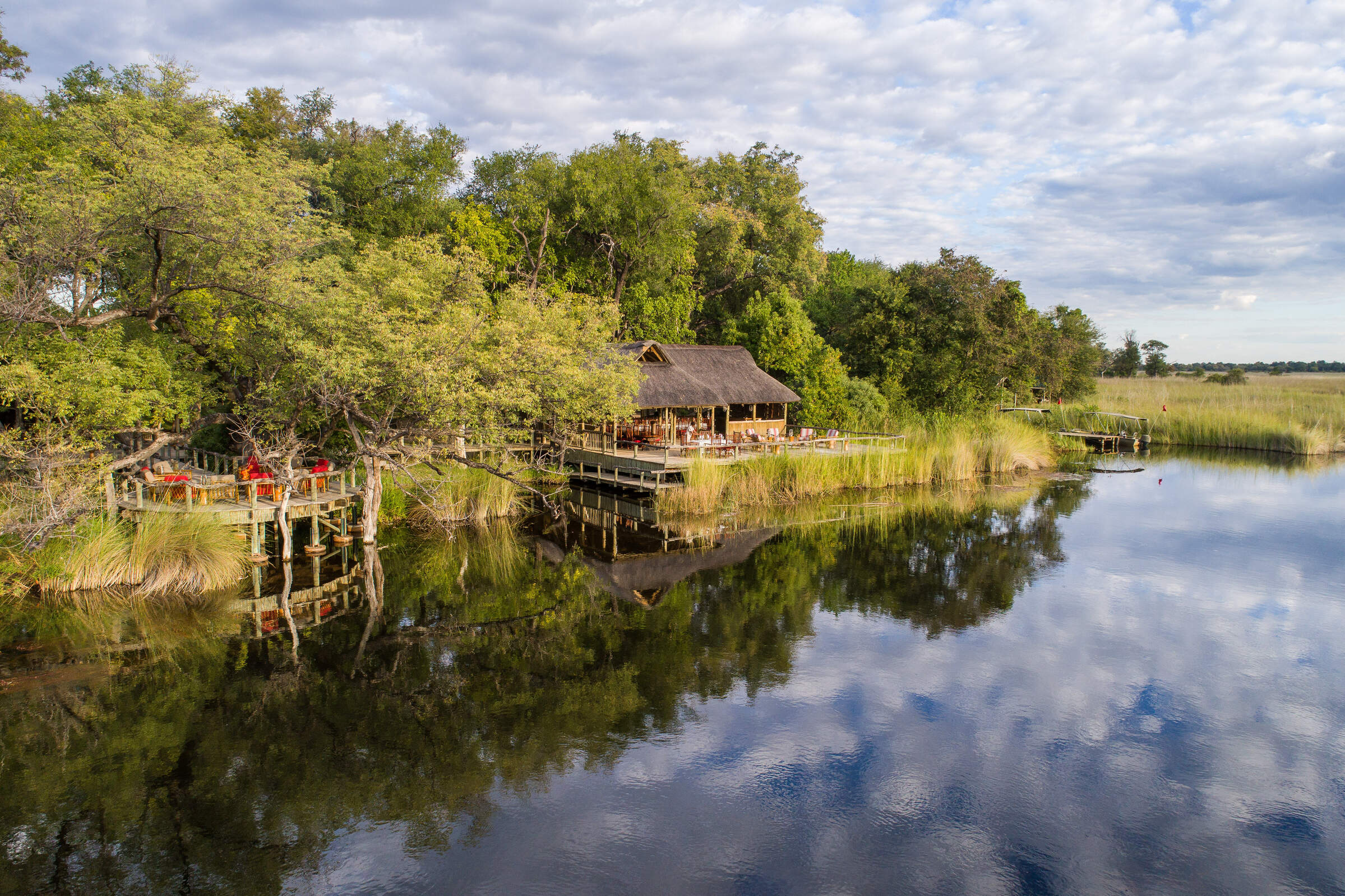
Xakanaxa
Xakanaxa Camp offers boat cruises on the Okavango Delta waterways year-round. That allows birders to seek out both dry-country and waterbirds across the diverse habitats in this area. We’ve enjoyed one of our best sightings of a Pel’s fishing owl hunting here, as well as a wide variety of raptors, king fishers, bee-eaters and lyrical songbirds.
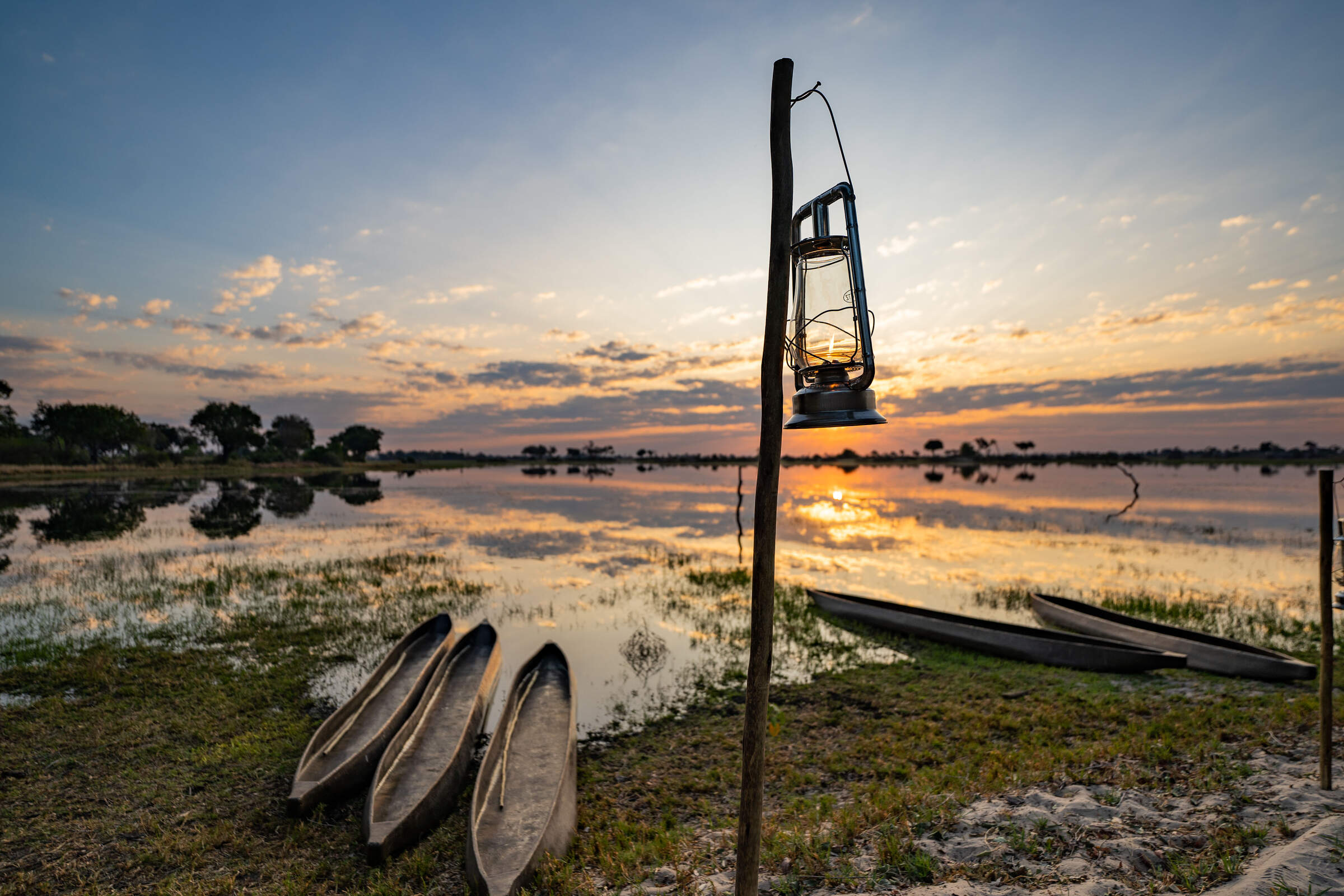
Pom Pom Camp
Located within extensive floodplain areas, the birding at Pom Pom Camp offers is excellent opportunities for birding in Botswana. Water-associated birds are a feature here and sightings may include wattled crane, Pel's fishing owlDickinson’s kestrel, African palm swifts, slaty and black egrets and black coucals.
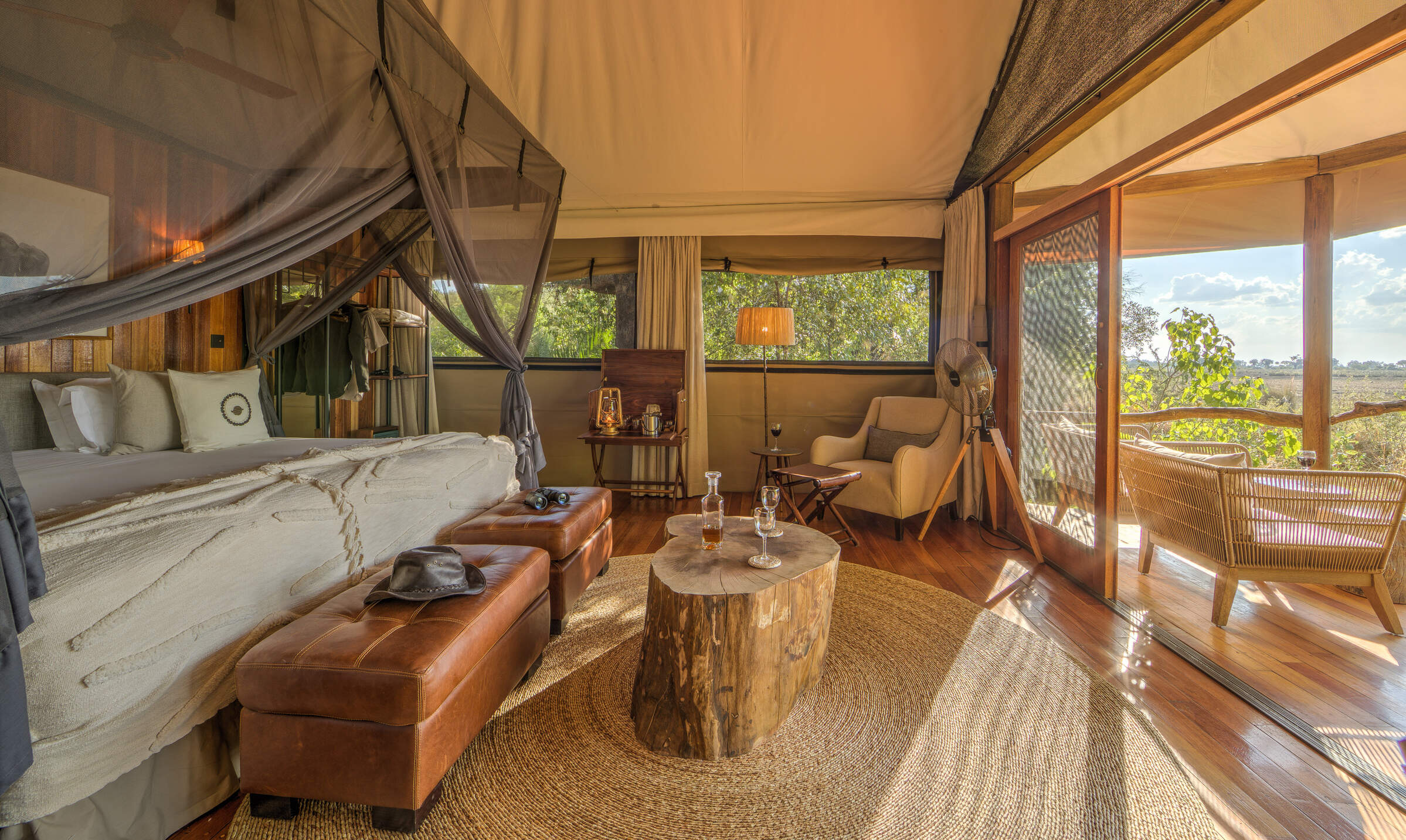
Kanana
Kanana offers motorboat access to an enormous heronry where, from mid-July onwards, many migratory waterbirds come to nest. With yellow-billed, open-billed and marabou storks, reed cormorants, pink-backed pelicans, grey herons and sacred ibis, it’s a superb opportunity for birdwatchers in Botswana.
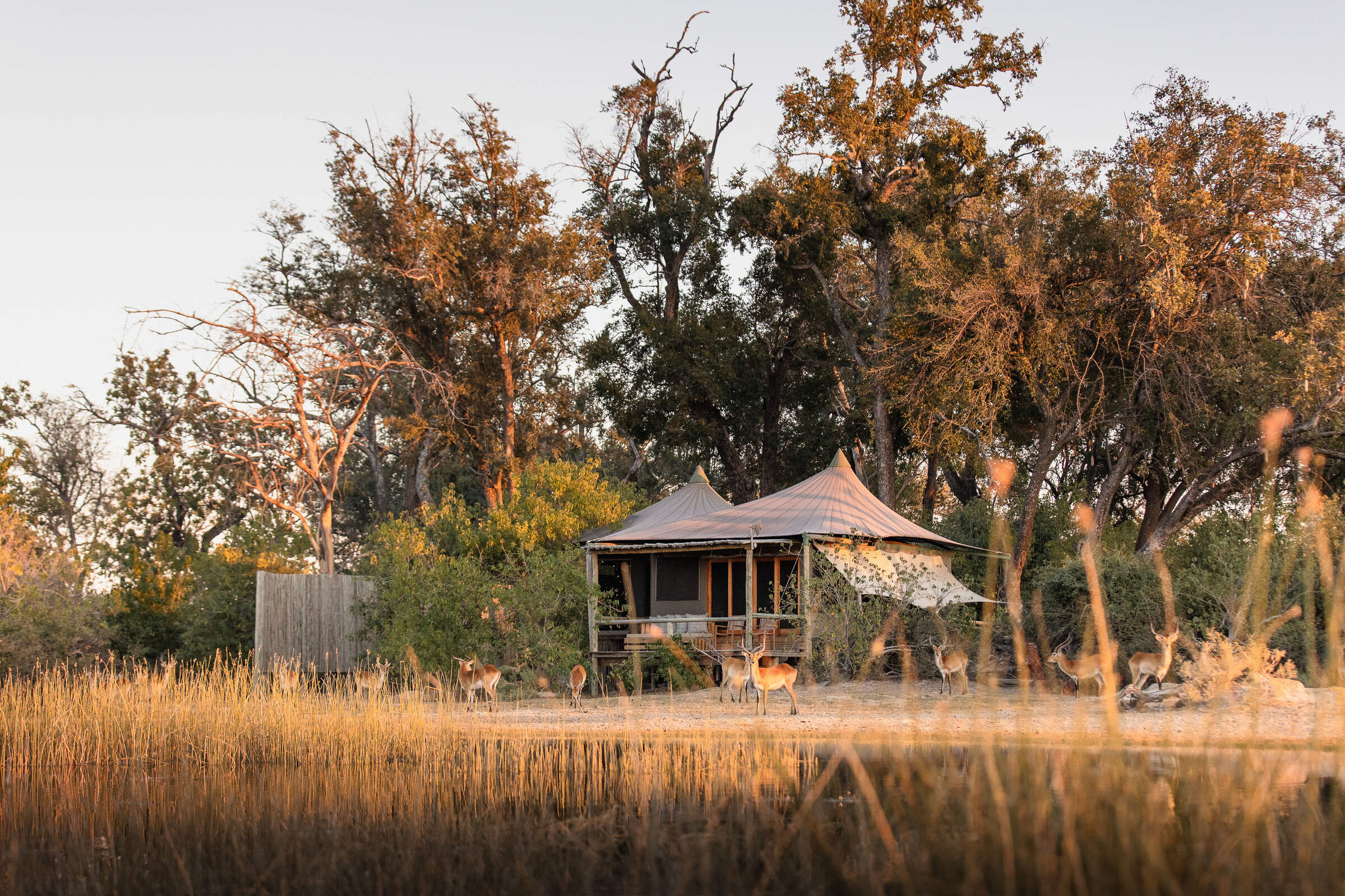
Little Vumbura
Little Vumbura is a first-rate camp for birdwatching in Botswana. From shallow and deepwater floodplains and channels to dense, shady woodlands, our sightings have included swallowtail bee-eaters, Pels fishing owls, white-backed ducks, brown firefinches, slaty egret and rufus-bellied herons.
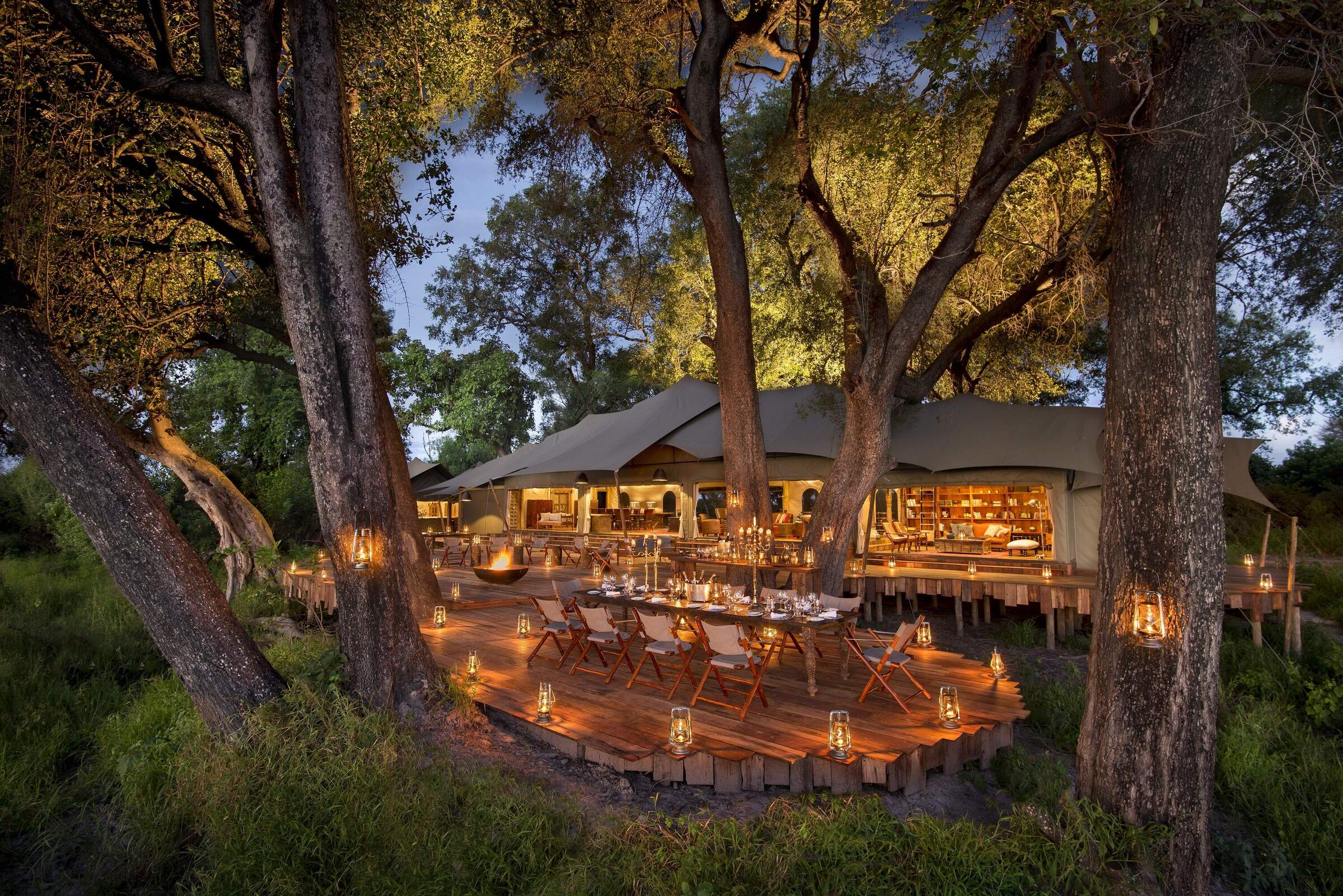
Duba Plains Camp
Duba Plains is located deep in the Okavango among a matrix of palm-dotted islands, floodplains and woodland. Birders in Botswana will find a rich and varied birdlife, with good numbers of typical Okavango specials such as Pel's fishing owl, slaty egret and wattled crane.
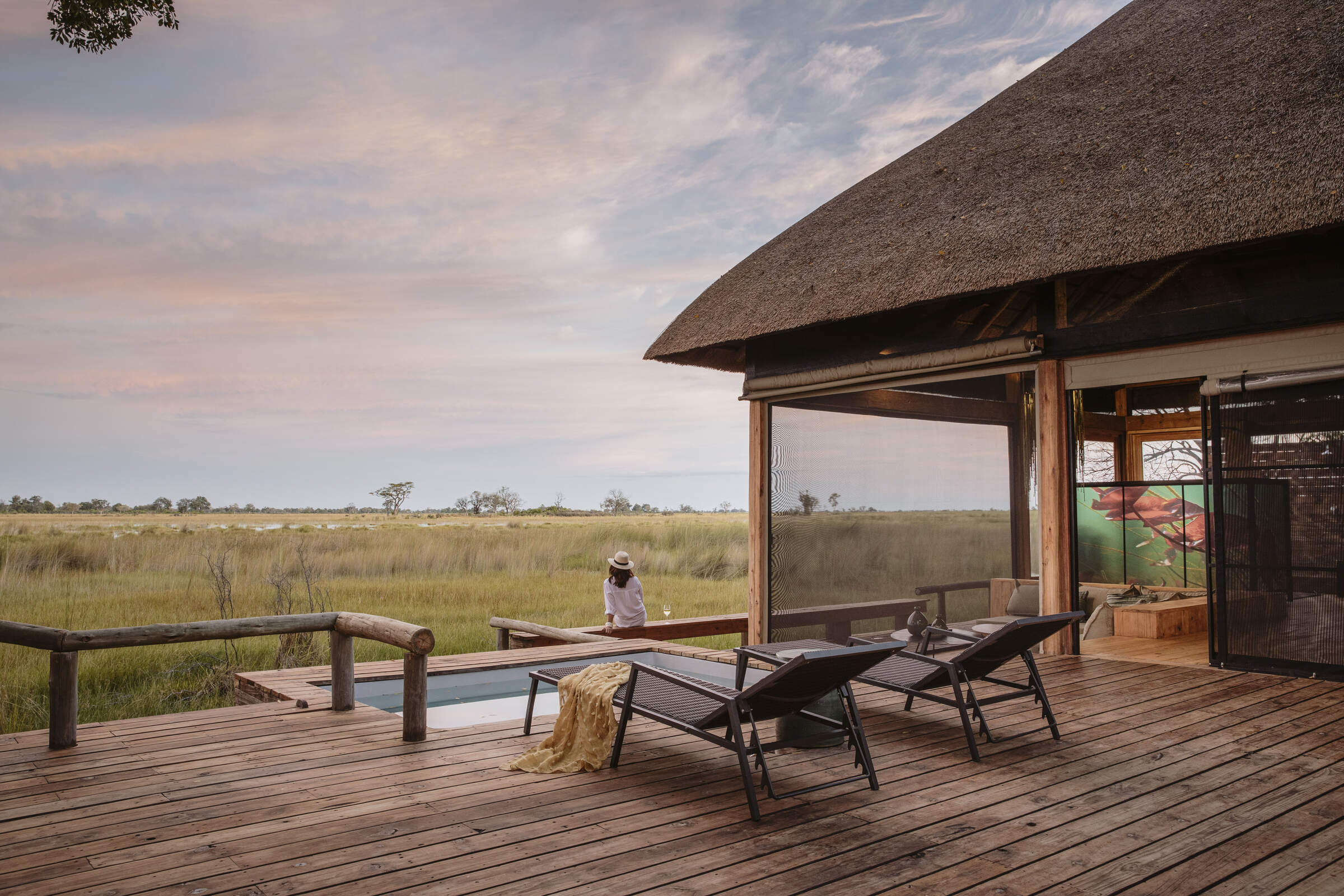
Vumbura Plains
Ranging from open floodplains to dense mopane bushveld, Vumbura Plains has wonderful birding opportunities all year round. Species you are likely to encounter include wattled crane, slaty egret, chirping cisticola and possibly rosy-throated longclaw.

Mombo Camp
The fertile soils around Mombo make for nutrient-rich vegetation resulting in excellent birding. With so much game around, vultures abound and birds of prey also find easy pickings whilst the wetter extremities have a different set of species again.
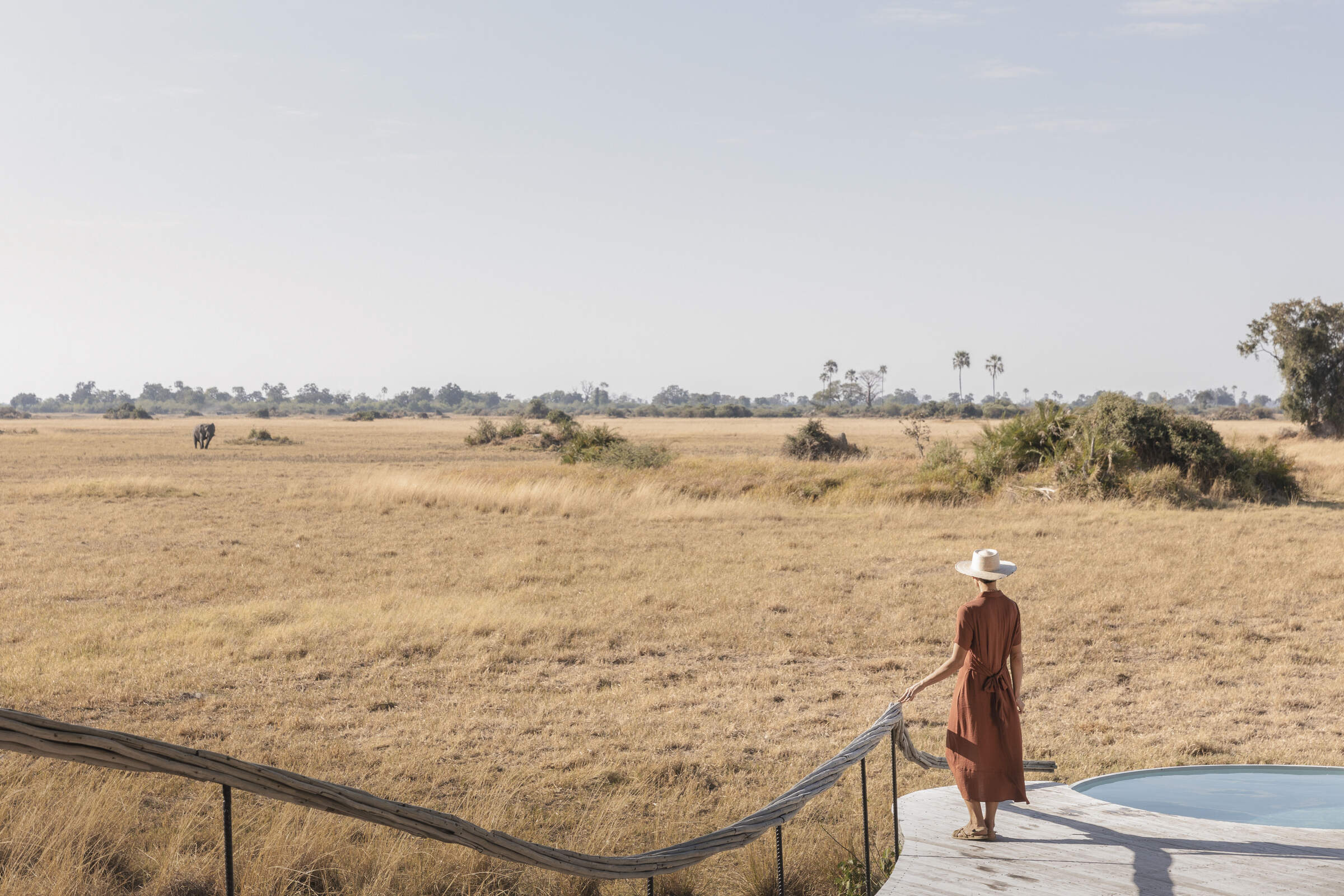
Little Mombo
Mombo is a birder's paradise. Chief’s Island has dry-country birds, whilst surrounding waterways are home to fish eagles and a variety of kingfishers, waders, darters, egrets, herons. If you are lucky you may catch a glimpse of a Pel's fishing owl!
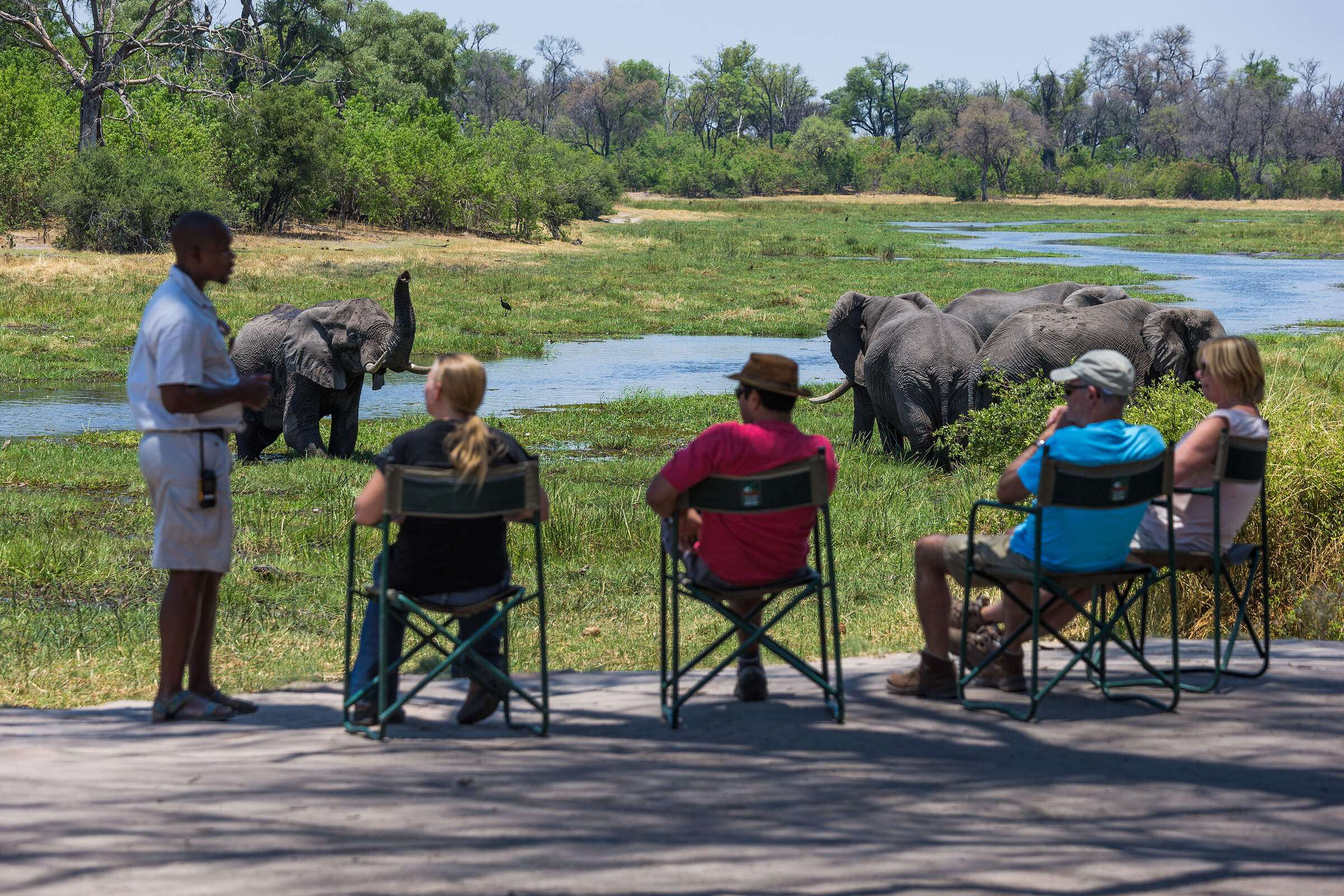
Machaba Camp
Machaba Camp is located in the Khwai Community Reserve. The camp is built in riverine forest on the edge of the Khwai River. The Moremi Game Reserve, the floodplains of the Khwai River and mature woodland are all home to a good variety of species.
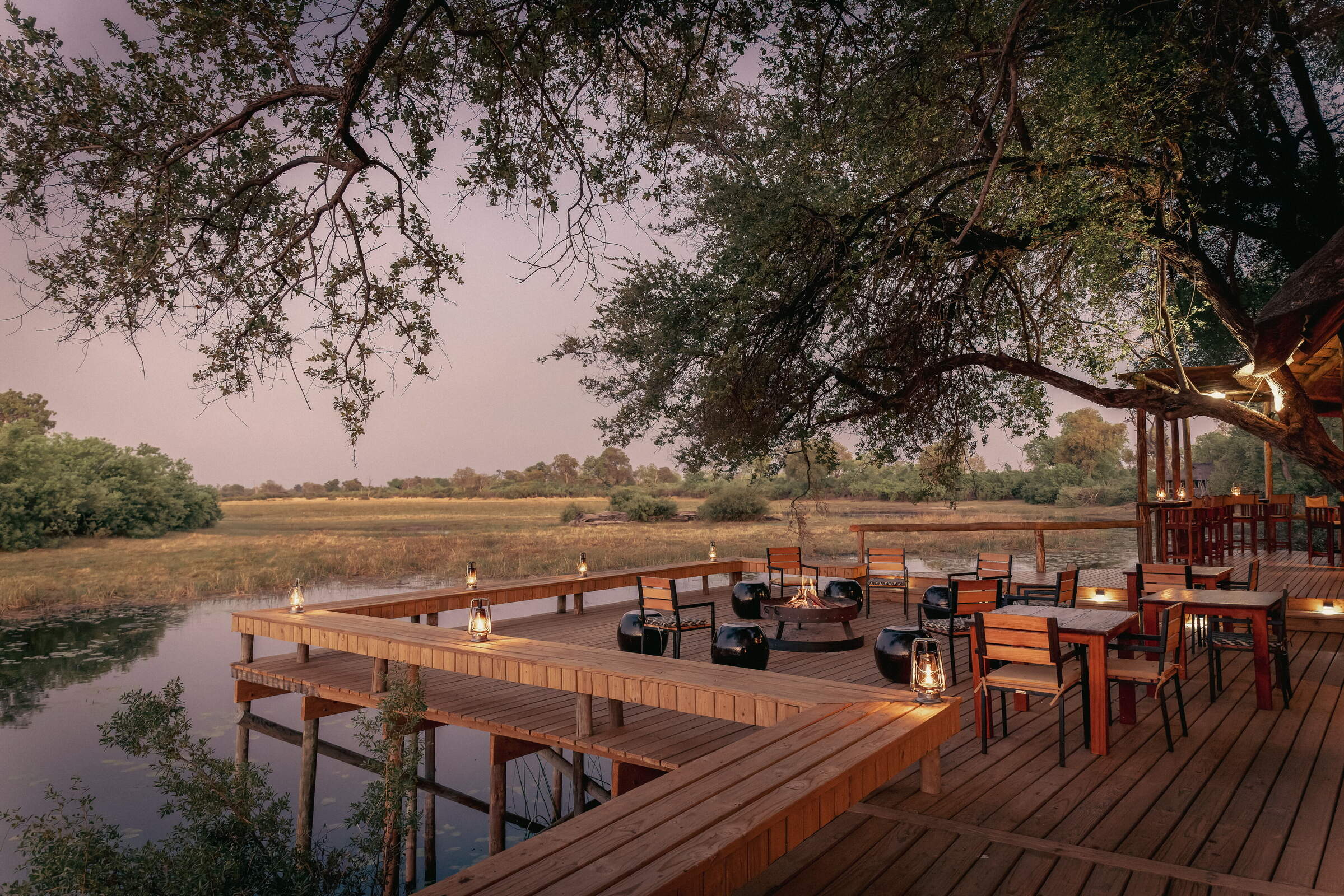
Savuti Camp
For birdwatchers in Botswana, Savuti Camp can be outstanding, ranging from Okavango species to those of the drier mopane woodland. The Savuti Channel has a high concentration of raptors and is internationally recognised as an Important Bird Area.
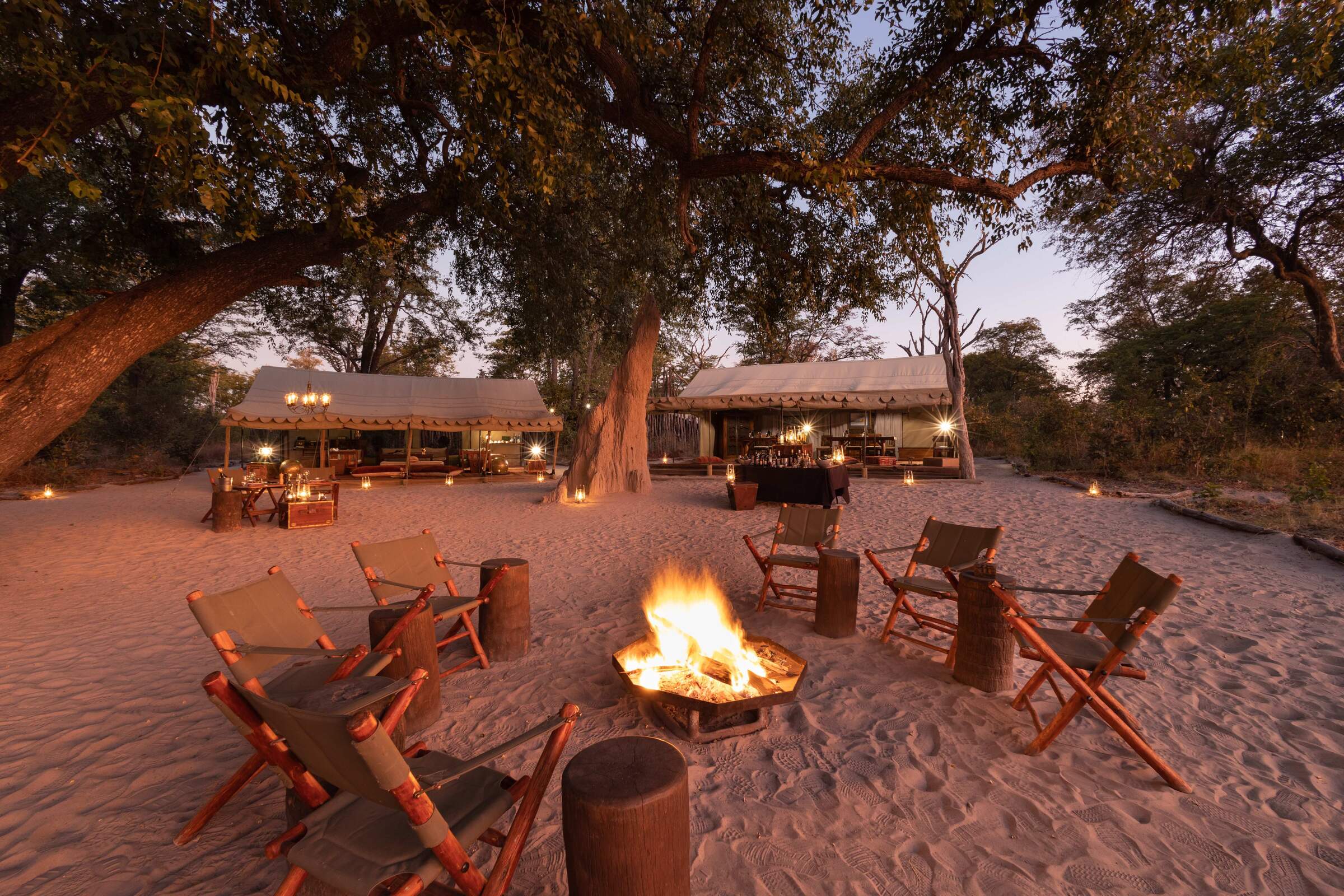
Selinda Explorers Camp
Located on the banks of the Selinda Spillway the camp offers a good mix of waterbirds and woodland species. The camp offers an honorary "membership" into the "111 Club", an honour bestowed for those who see 111 or more species during their stay.
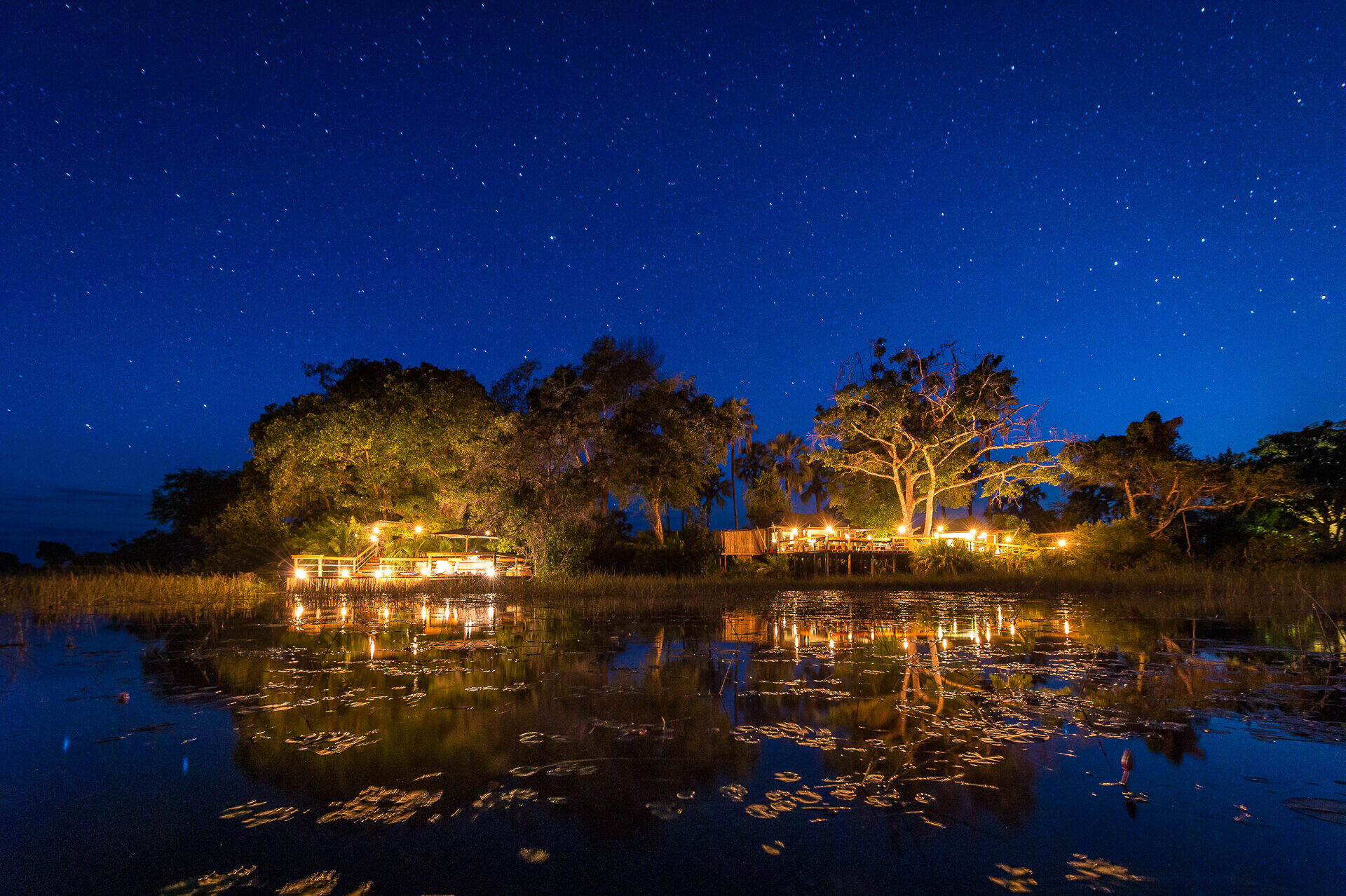
Pelo Camp
Located in the Jao Concesion, birding is exceptional at Pelo Camp. Birds typical of wetlands such as wattled crane and lesser jacana are found on the eastern side, with the western drier areas hosting woodland species such as Dickinson Kestrel.
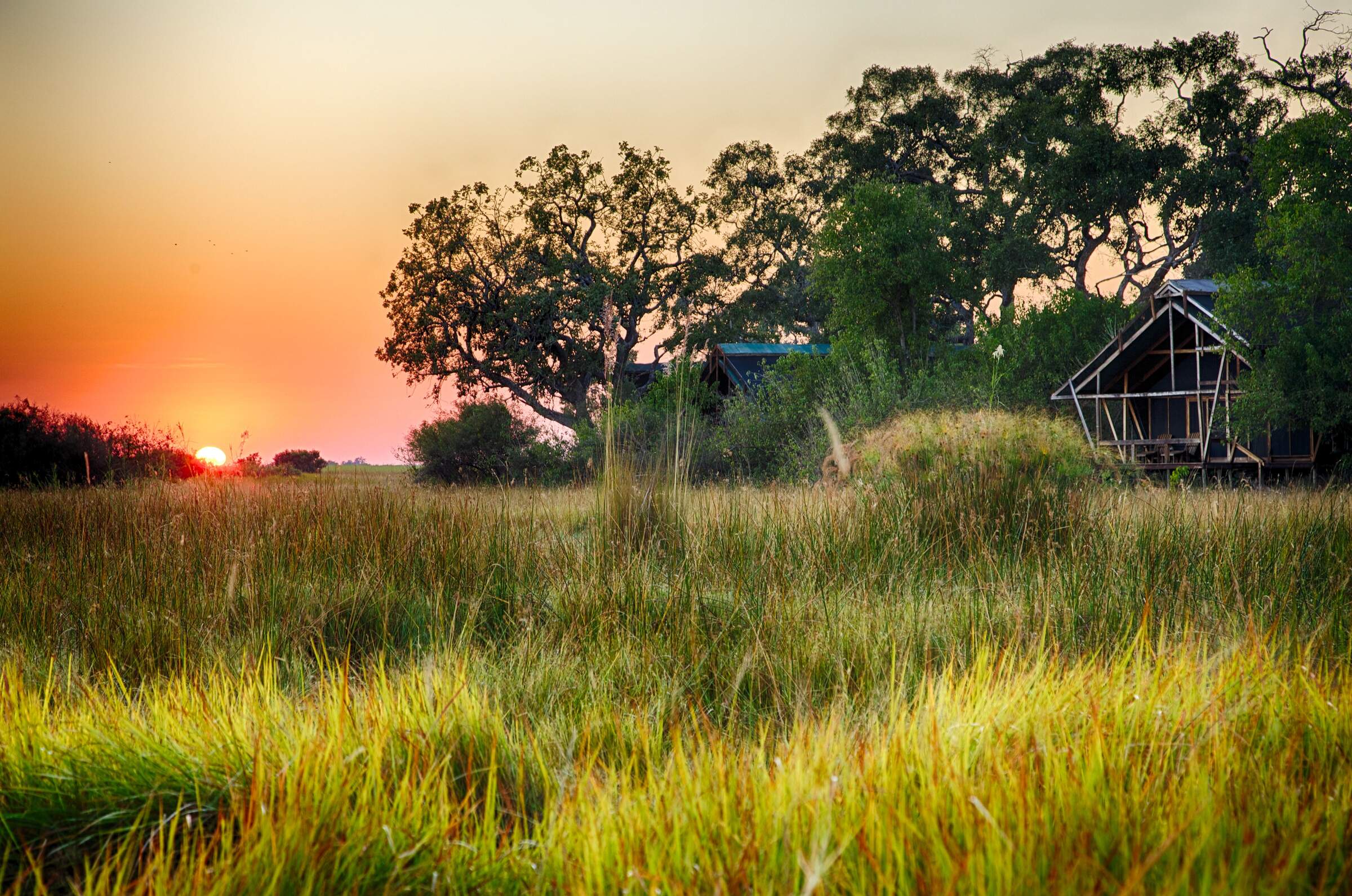
Lebala Camp
Situated in the huge, remote Kwando Concession of the Linyanti, Lebala Camp has access to mopane forests, lush riverine forest and open floodplains attracting an incredible range of bird species. Raptors such as eagles and vultures thrive here.
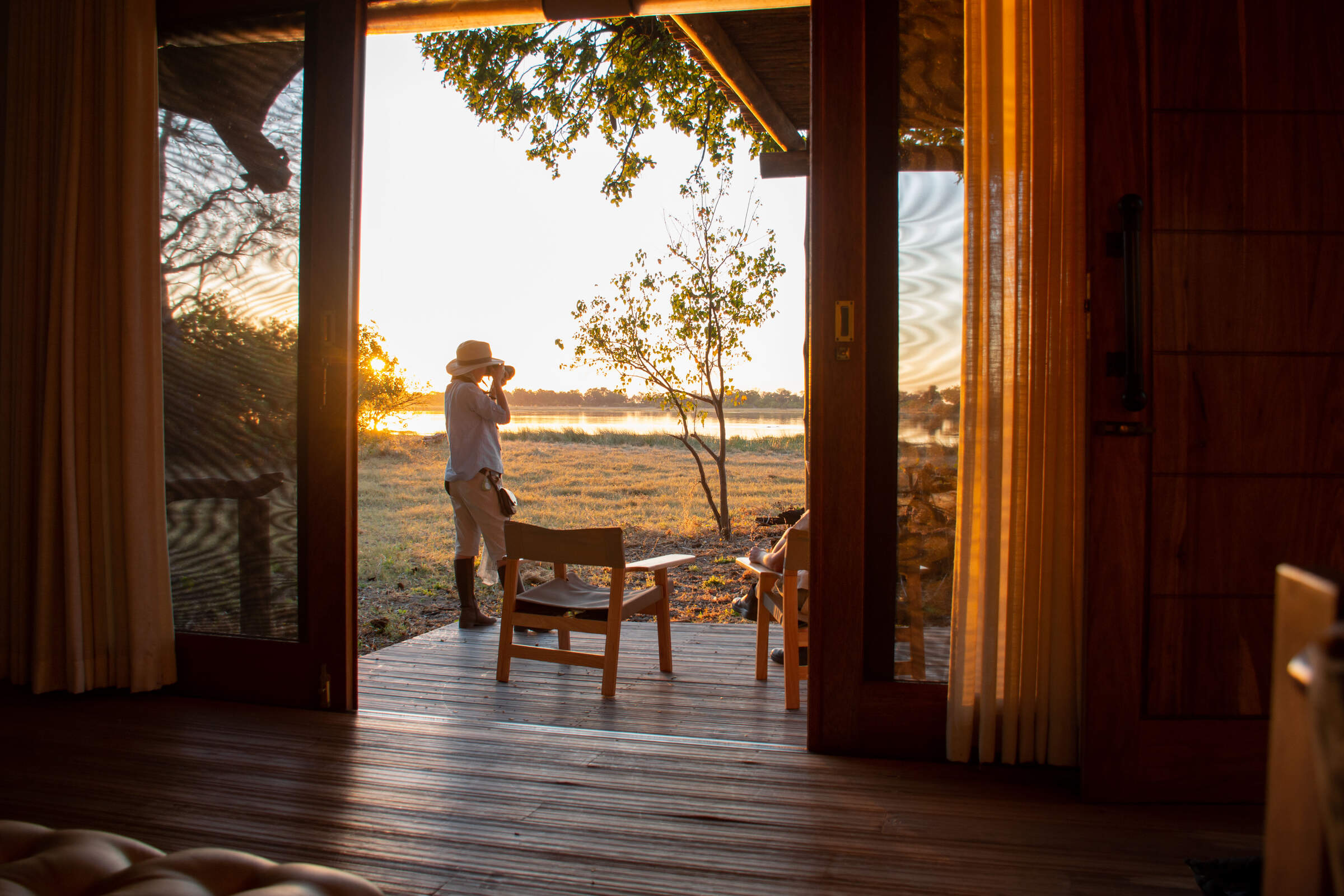
Kwara Camp
The environment at Kwara Camp is incredibly diverse, resulting in superb birdwatching. Seasonal floodplains and wooded islands surround camp, while papyrus-lined waterways, lagoons, mopane woodland and scrub savannah are all easily accessible.
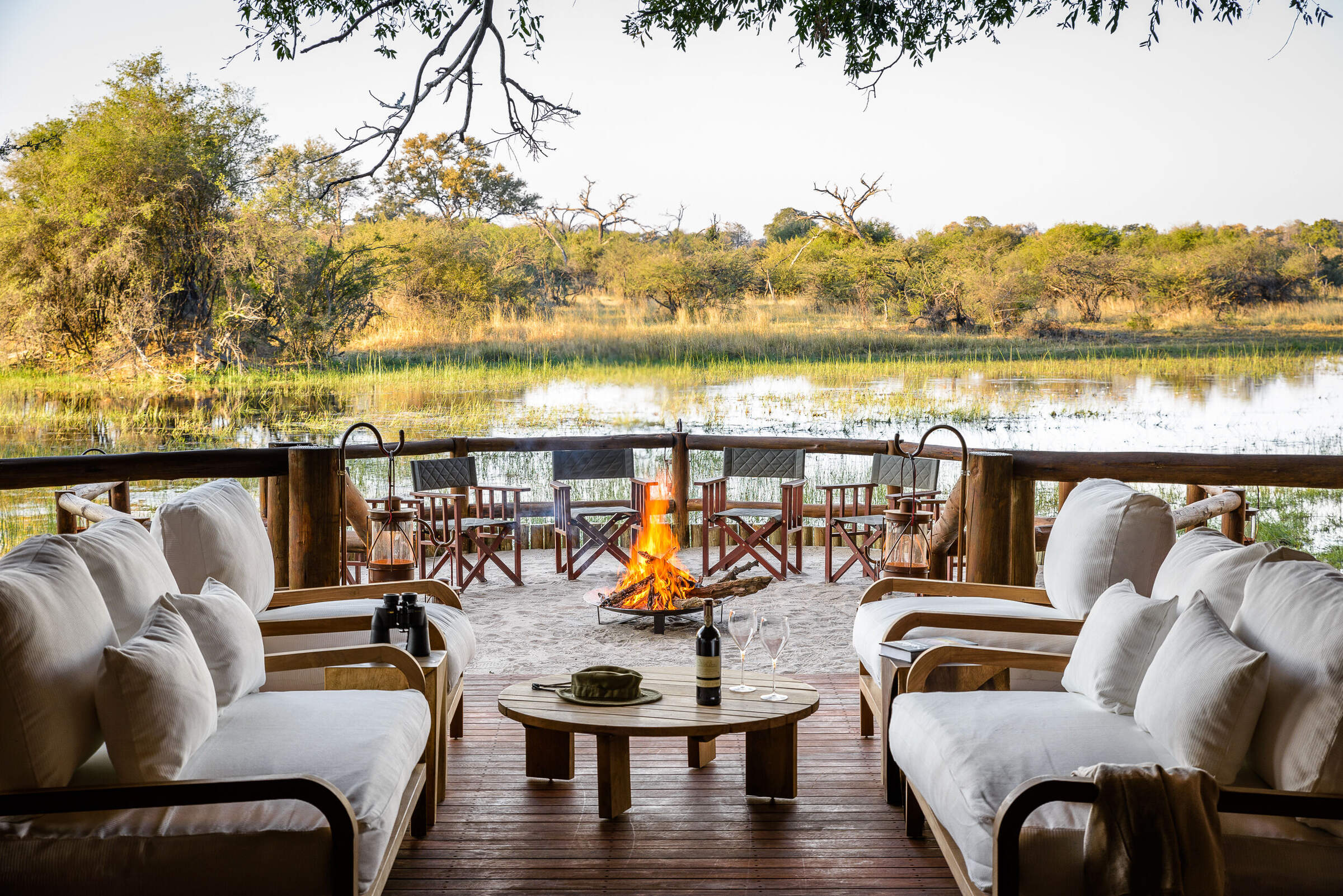
Chief's Camp
The diverse habitats around Chief's Camp attract over 450 bird species, from waterbirds to woodland varieties. Mokoro excursions offer close appraoches to African jacana and pied kingfisher, whilst woodland species are seen on 4WD activities.
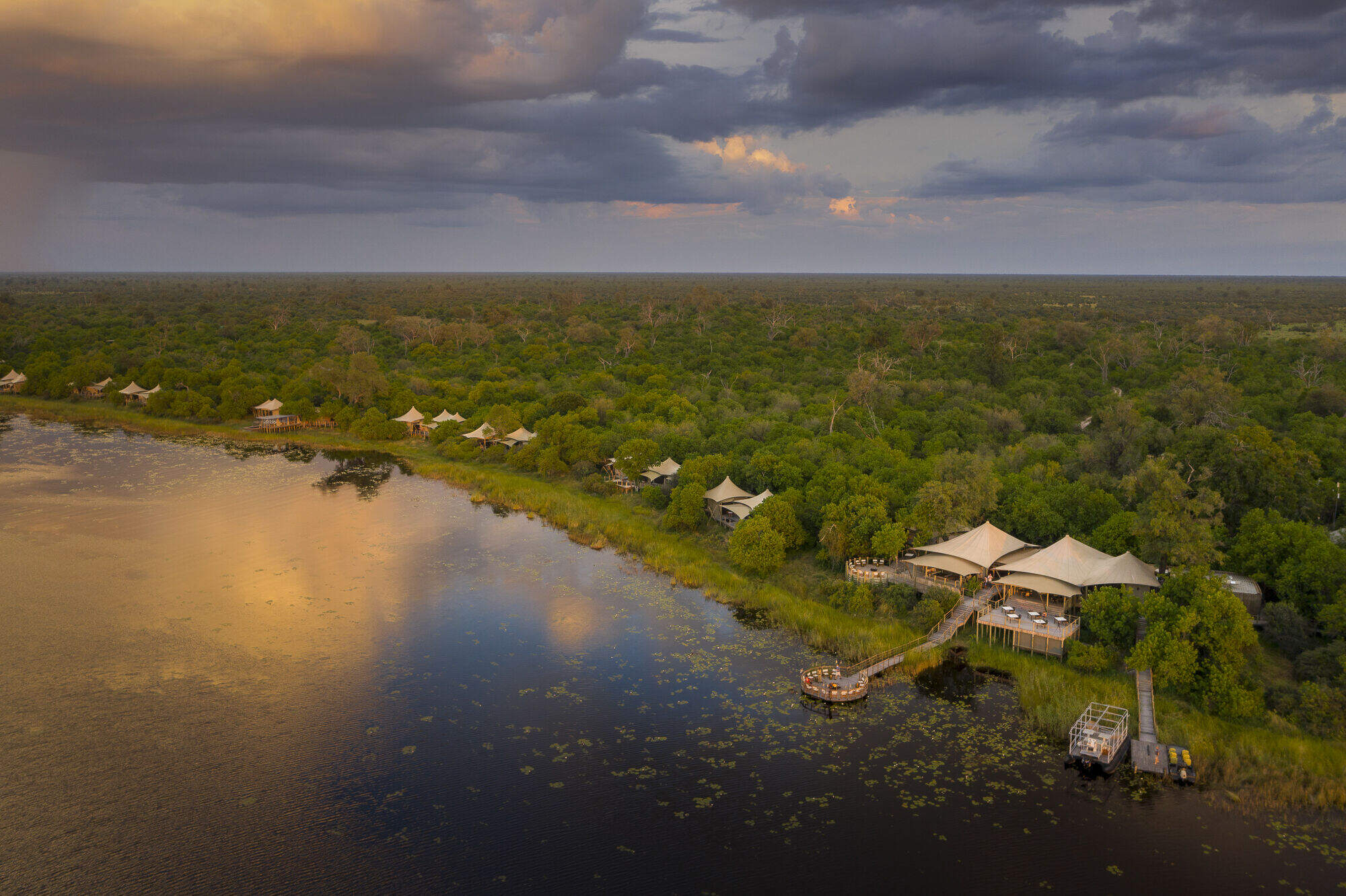
DumaTau
Birding is outstanding at Duma Tau. There is a diversity of habitats which in turn attracts a variety of species ranging from waterbirds to the drier mopane woodland species. The Savute Channel has a high concentration of eagles and raptors.
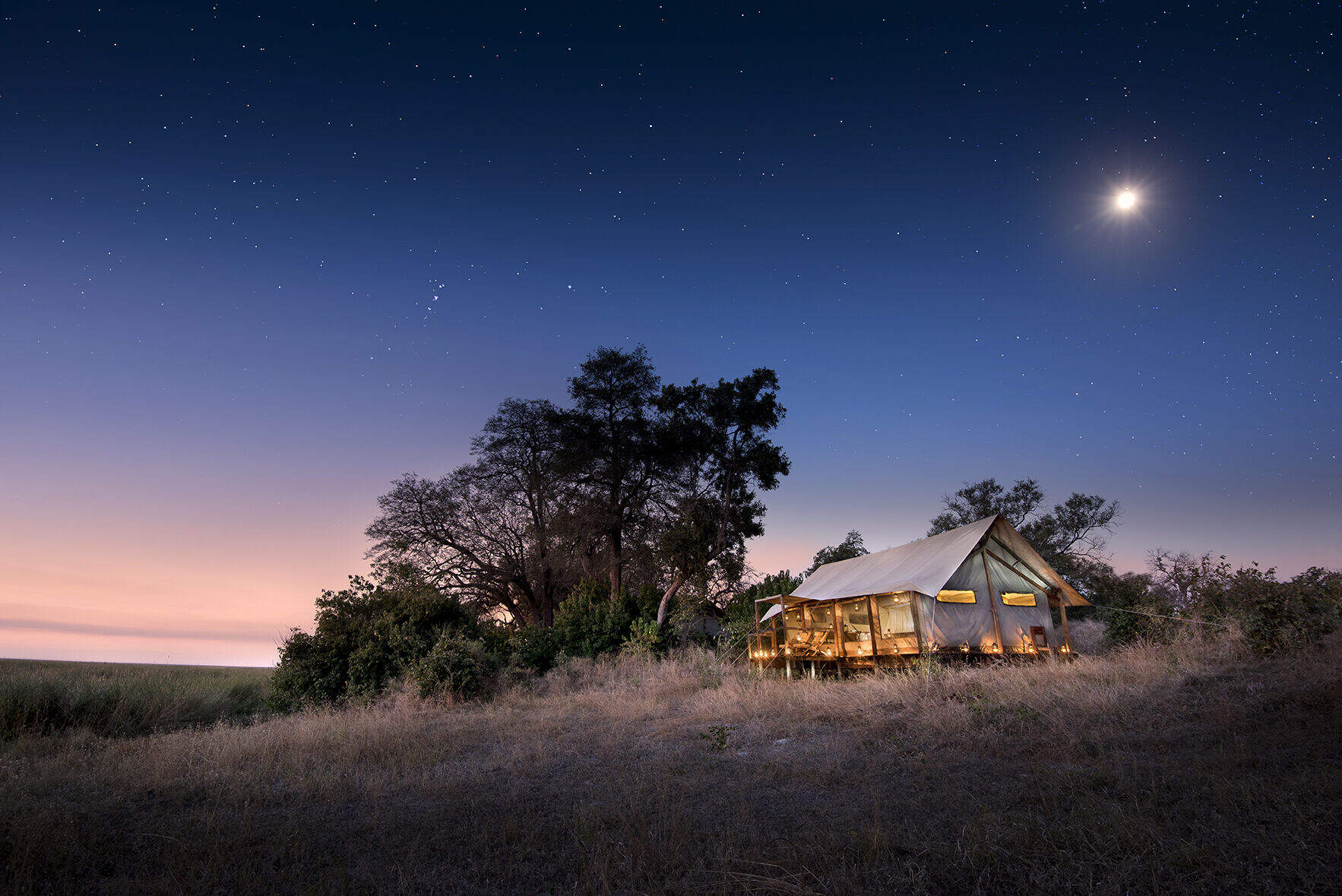
Linyanti Bush Camp
Highly knowledgeable guides and a mix of wet and dry environments makes Linyanti Bush Camp an excellent addition to a birdwatching holiday. We noted a particularly wide variety of raptors and owls, in addition to bee-eaters and kingfishers.
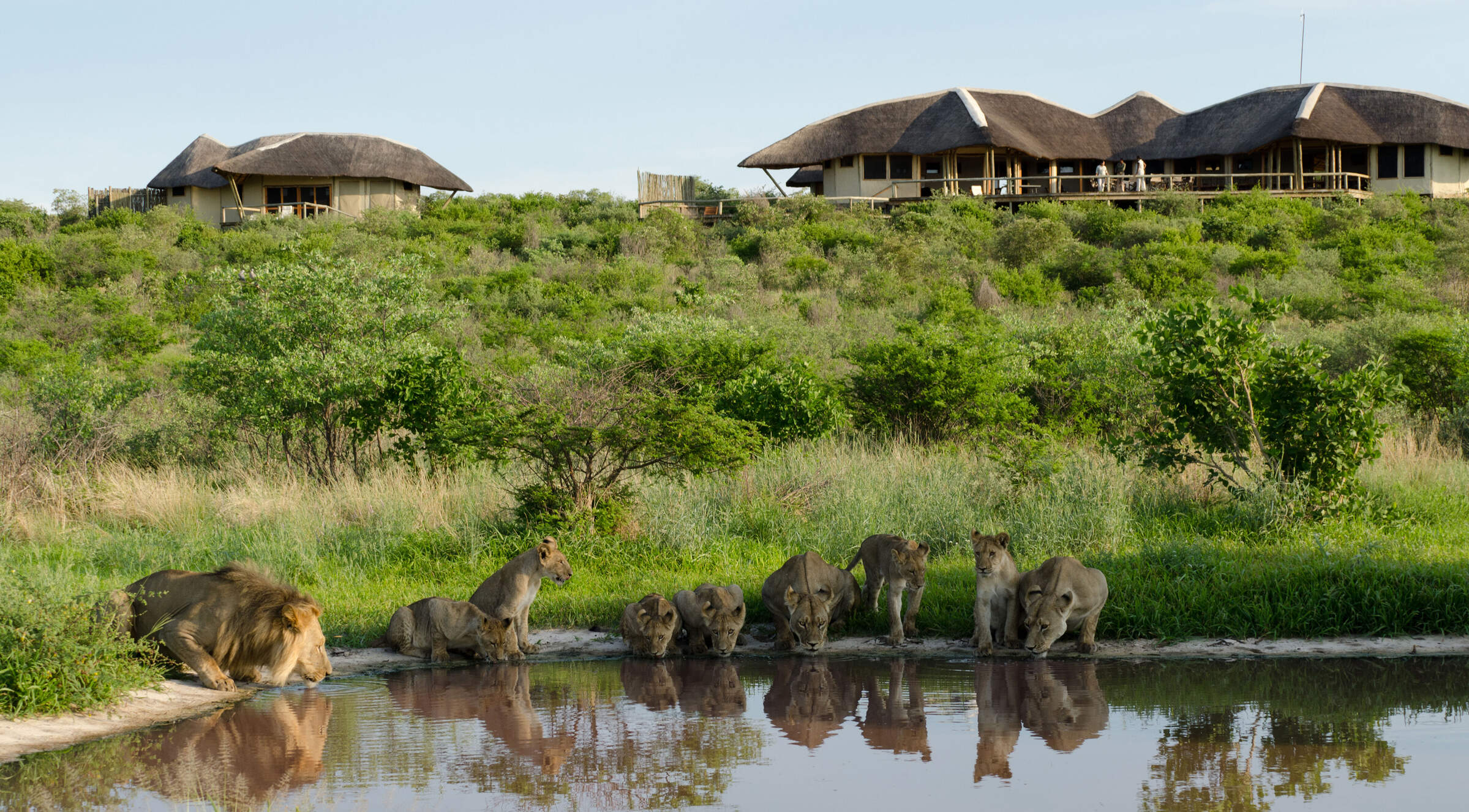
Tau Pan Camp
Even though the central Kalahari is largely a semi-desert it is home to a surprisingly high number of bird species. The best time of year for birding is the summer when the rain falls and resident birds are joined by migratory species.
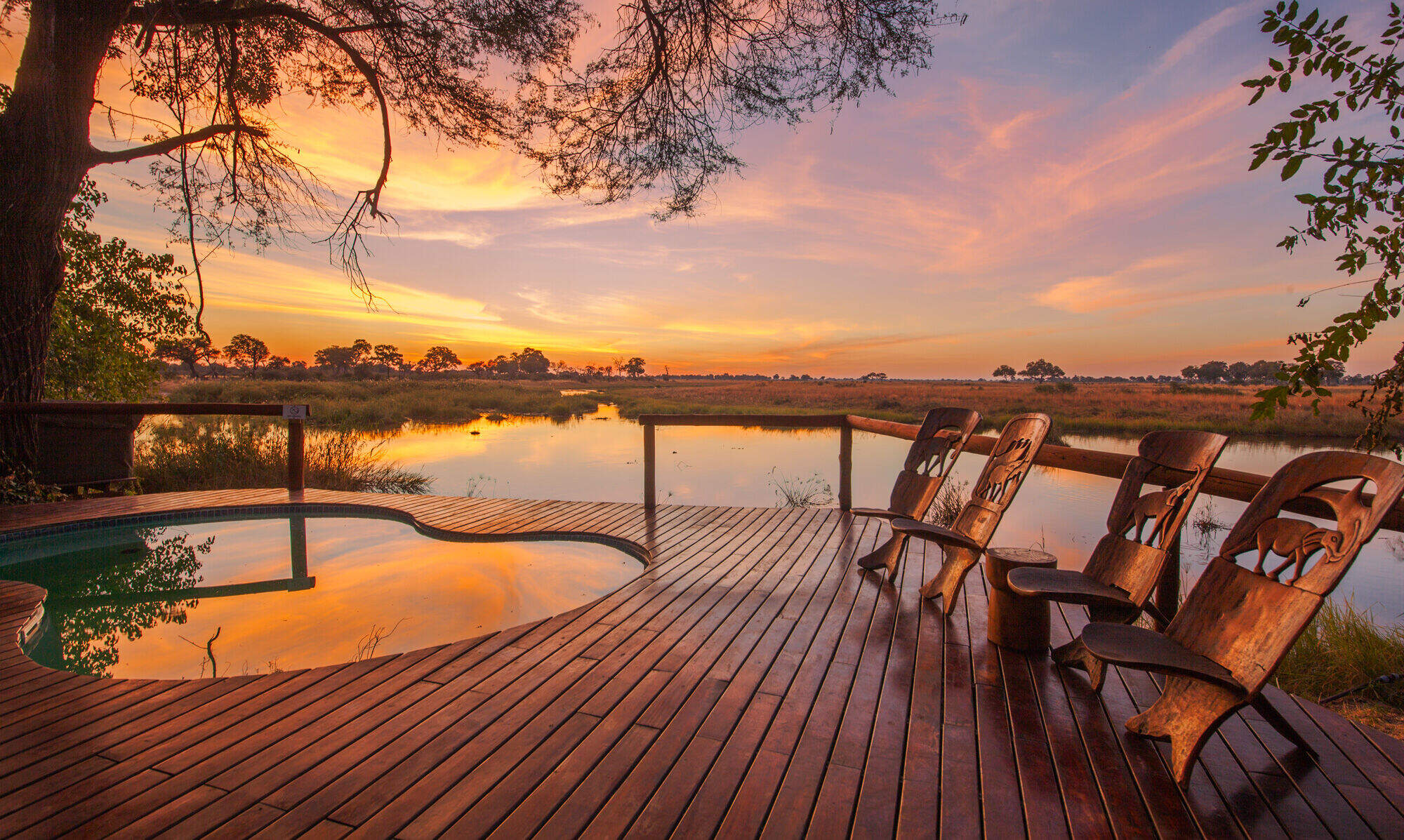
Lagoon Camp
Drives from Lagoon Camp cover riverine, savannah and mopane-dominated areas – while boat trips bring great views over papyrus reedbeds. Colonies of carmine bee-eaters may enhance your birdwatching from mid-September to early December.
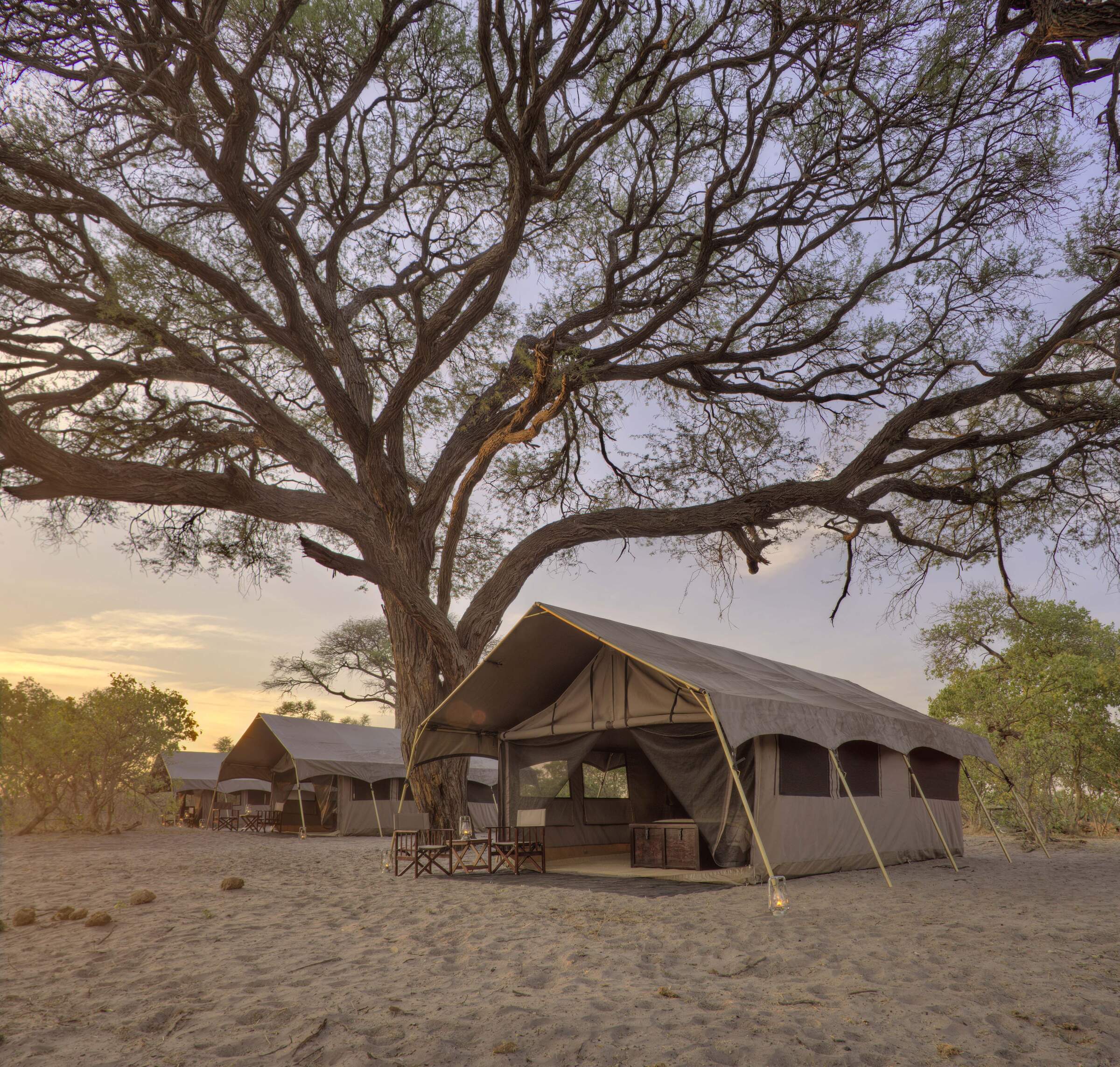
Savute Under Canvas
The Savuti Marshes are renowned for birdlife densities, particularly from mid-December to March, when flocks of yellow-billed storks, African spoonbills and pink-backed pelicans make this a great time for birdwatching in Botswana.
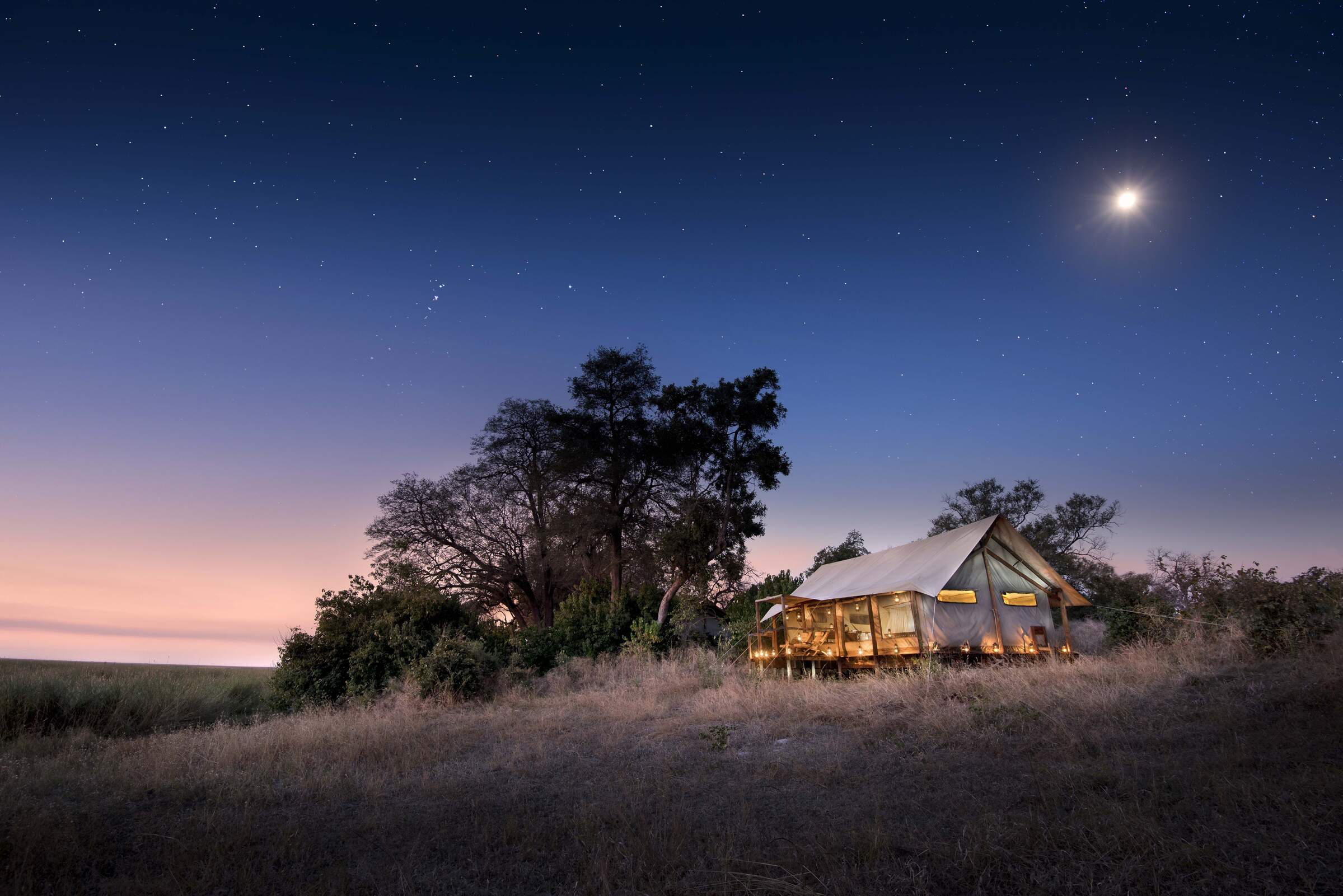
Linyanti Ebony
Noteworthy for species of raptors and owls, plenty of water birds and a range of land birds such as ground hornbill and colourful Acacia pied barbets. The camp also has great guides and a mix of wet and dry environments for birding.
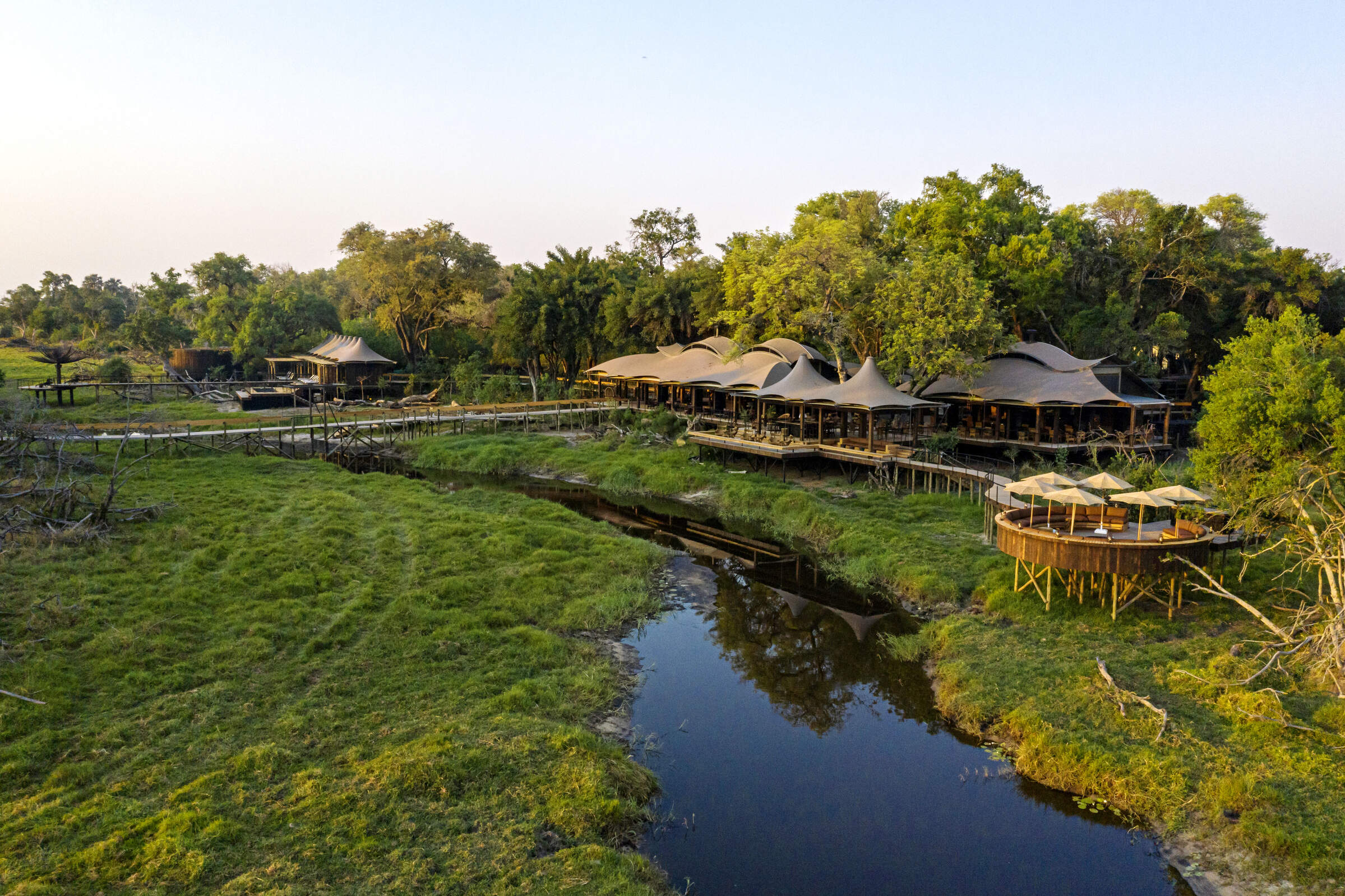
Xigera Safari Lodge
Situated in the heart of the Okavango Delta the birding at Xigera is superb all year round. Pel's fishing-owl is regularly seen, with other specials including wattled crane, slaty egret, fan-tailed widowbird and pinkbacked pelican.
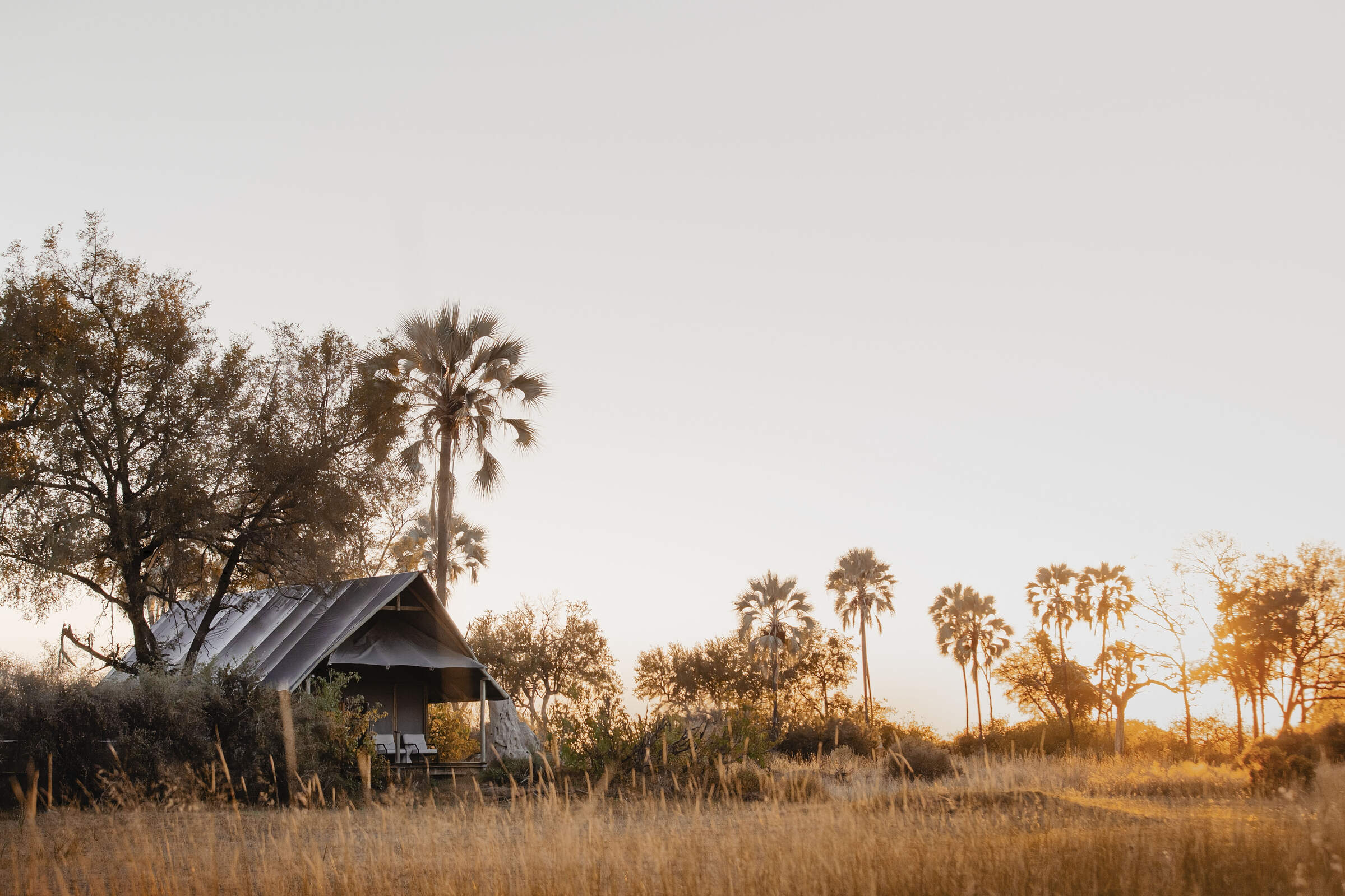
Chitabe Lediba
Approximately 345 species have been recorded in the Chitabe concession, comprising both resident and migratory birds. Raptors are abundant and thrive here. Of particular note on Chitabe are breeding wattled crane and slaty egret.
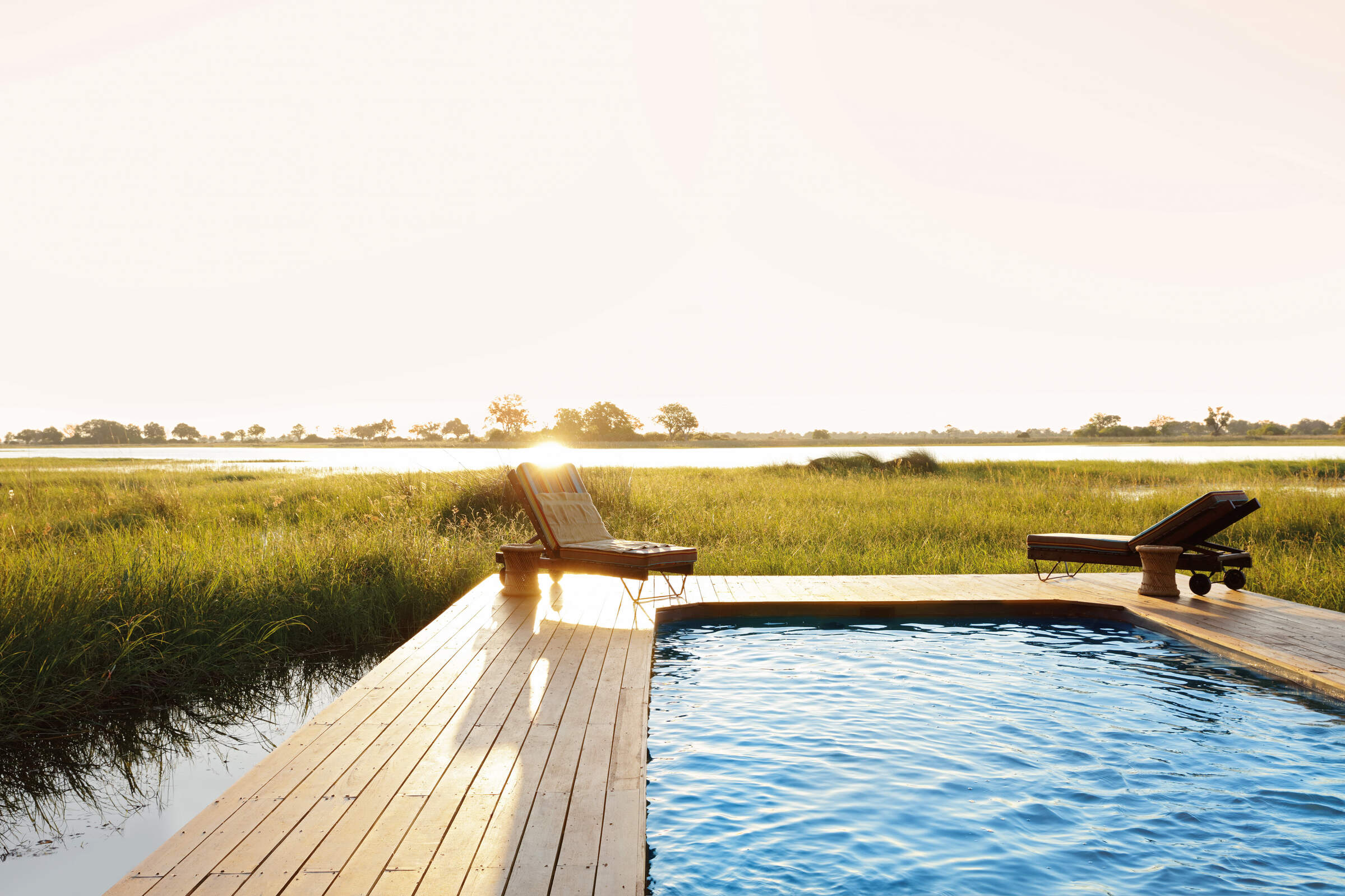
Mapula Lodge
Having a variety of habitats on its doorstep Mapula Lodge is a superb camp for birding. Over the years, we have spotted dwarf bittern, wattled crane, saddle-billed stork, brown snake eagle, Meyer's parrot and lesser grey shrike.
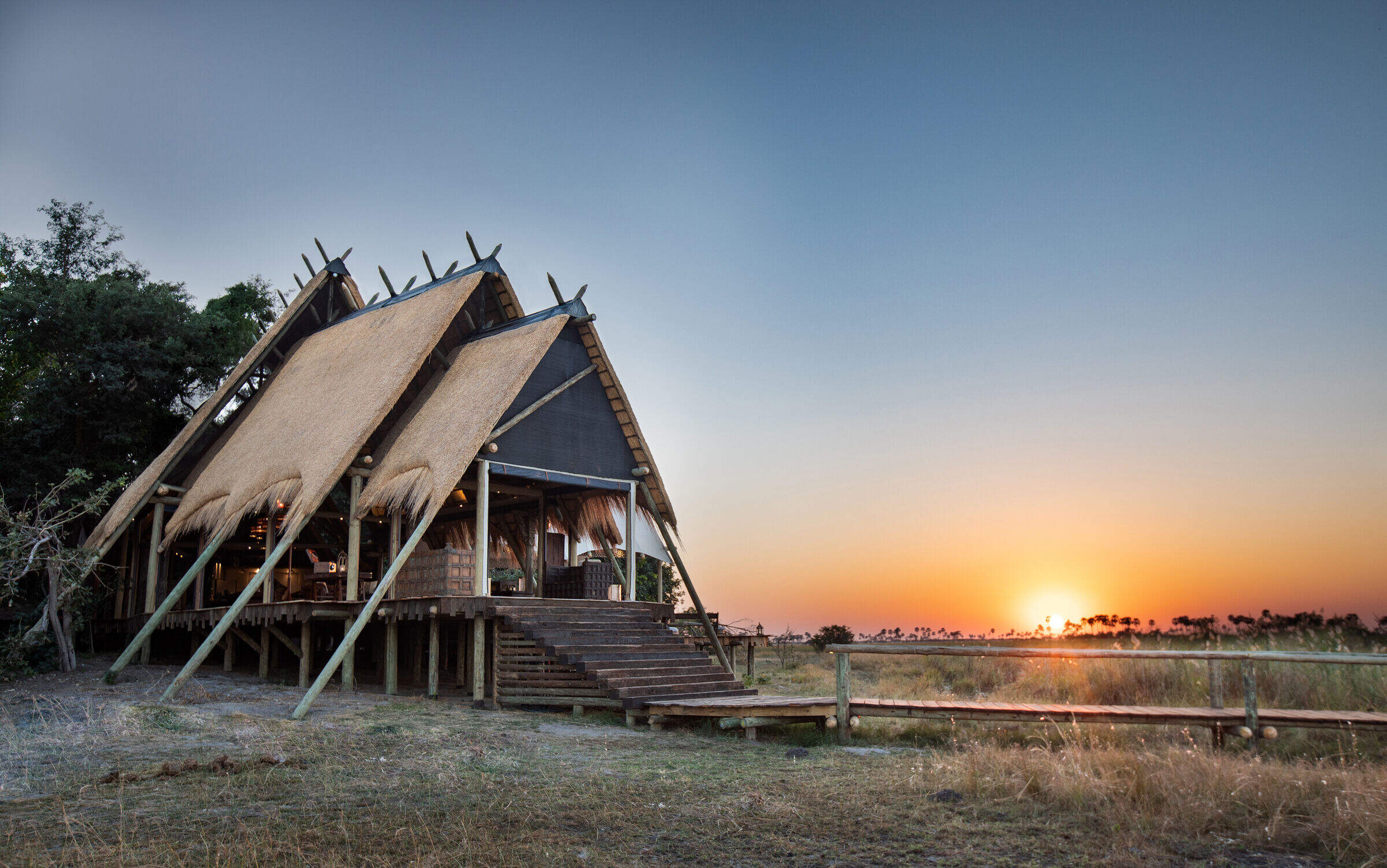
Selinda Camp
Selinda Camp's location on the Selinda Spillway is an excellent place for birdwatching. Many waterbird species, like cranes, herons, kingfishers and cormorants, can be viewed here and eagle and vulture populations are healthy.
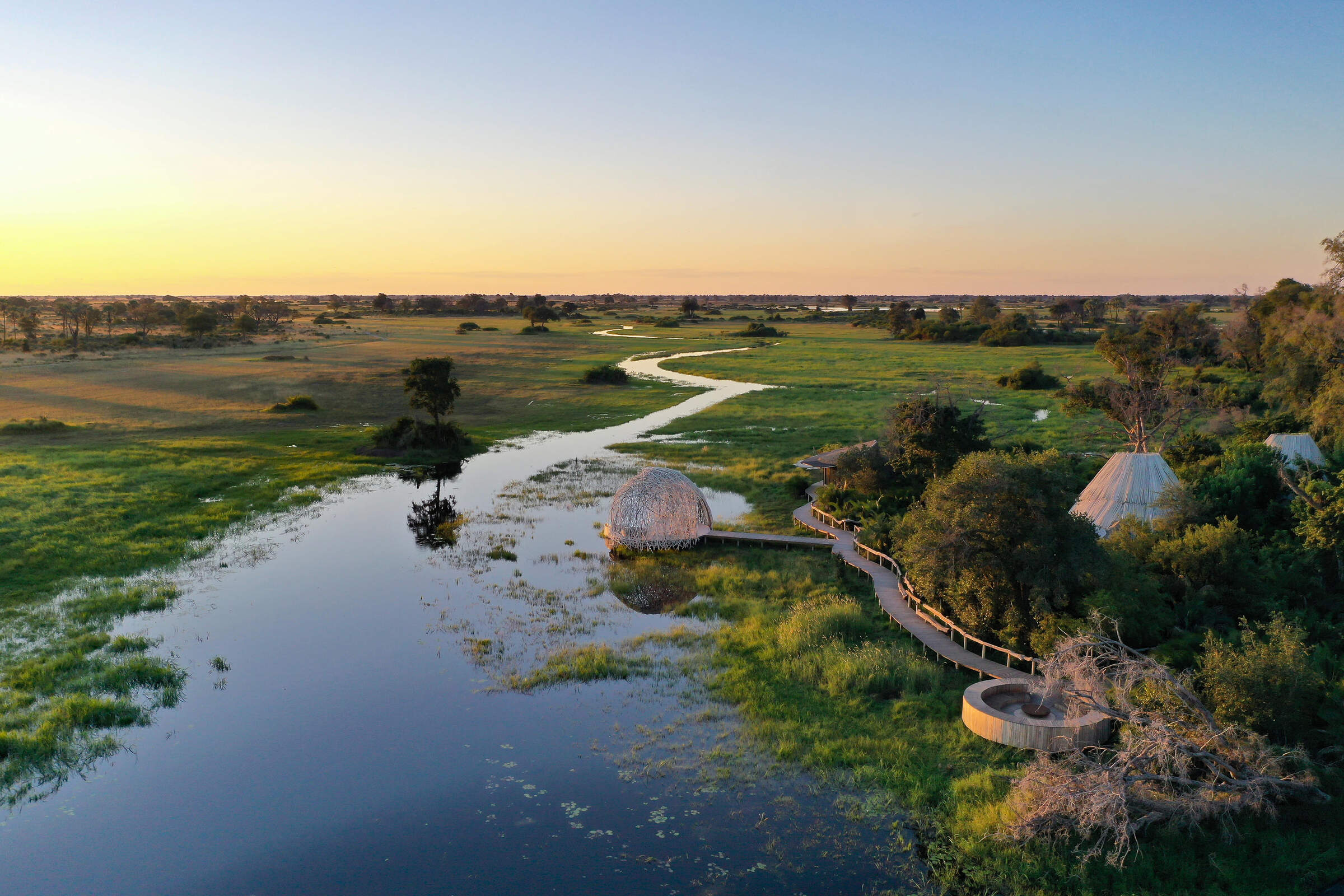
Jao Camp
Jao Camp offers superb birding, include wetland specialities such as yellow-billed and woolly-necked storks, hadeda ibis, painted snipe, slaty and black egret, sacred ibis, wattled crane, goliath heron and Pel's fishing owl.
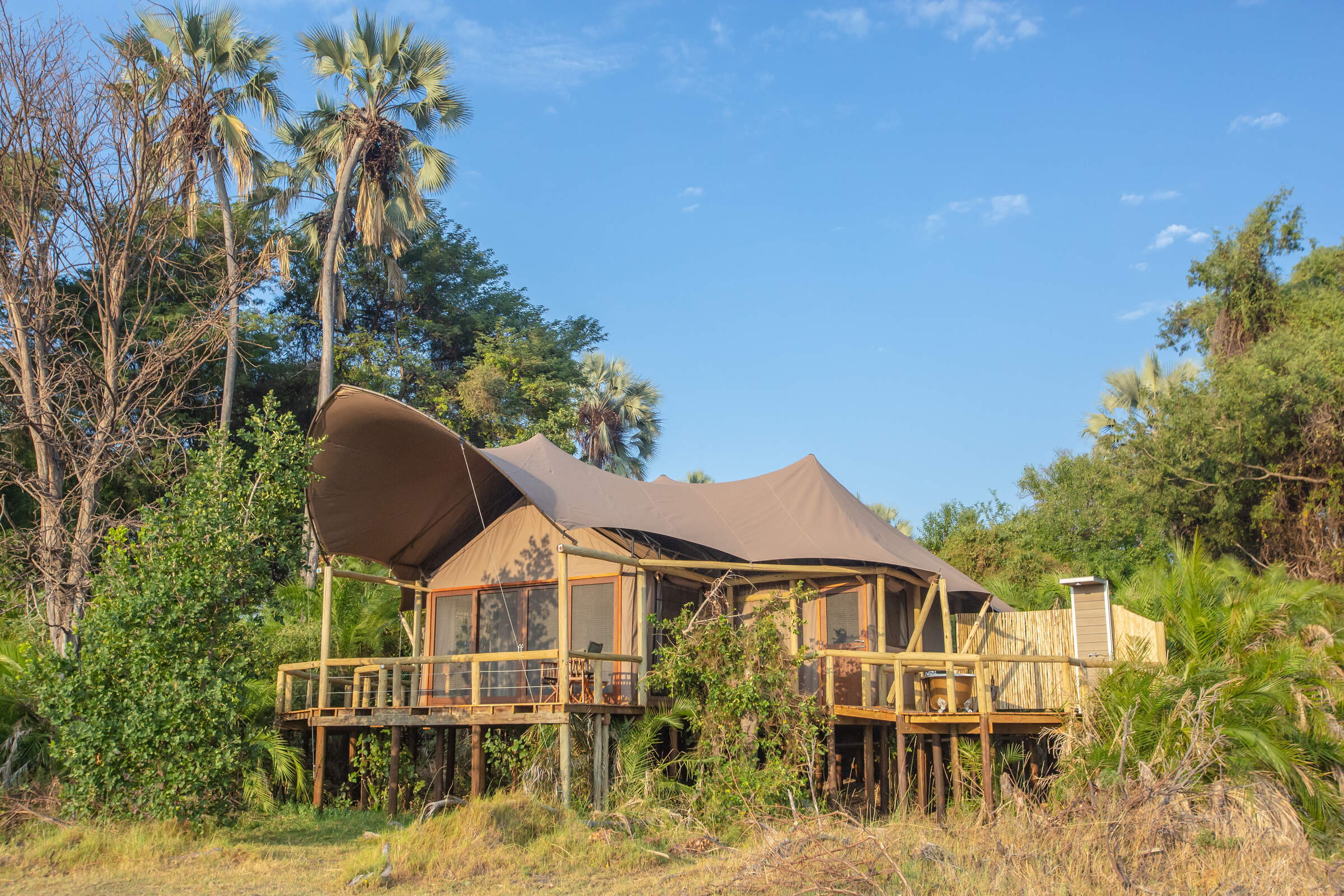
Jacana Camp
Jacana Camp would be a key part of a birding trip to Botswana, with species including Pel's fishing owl, wattled crane, saddle-billed stork, African darter, reed cormorant, slaty egret, and goliath and rufous-bellied herons.
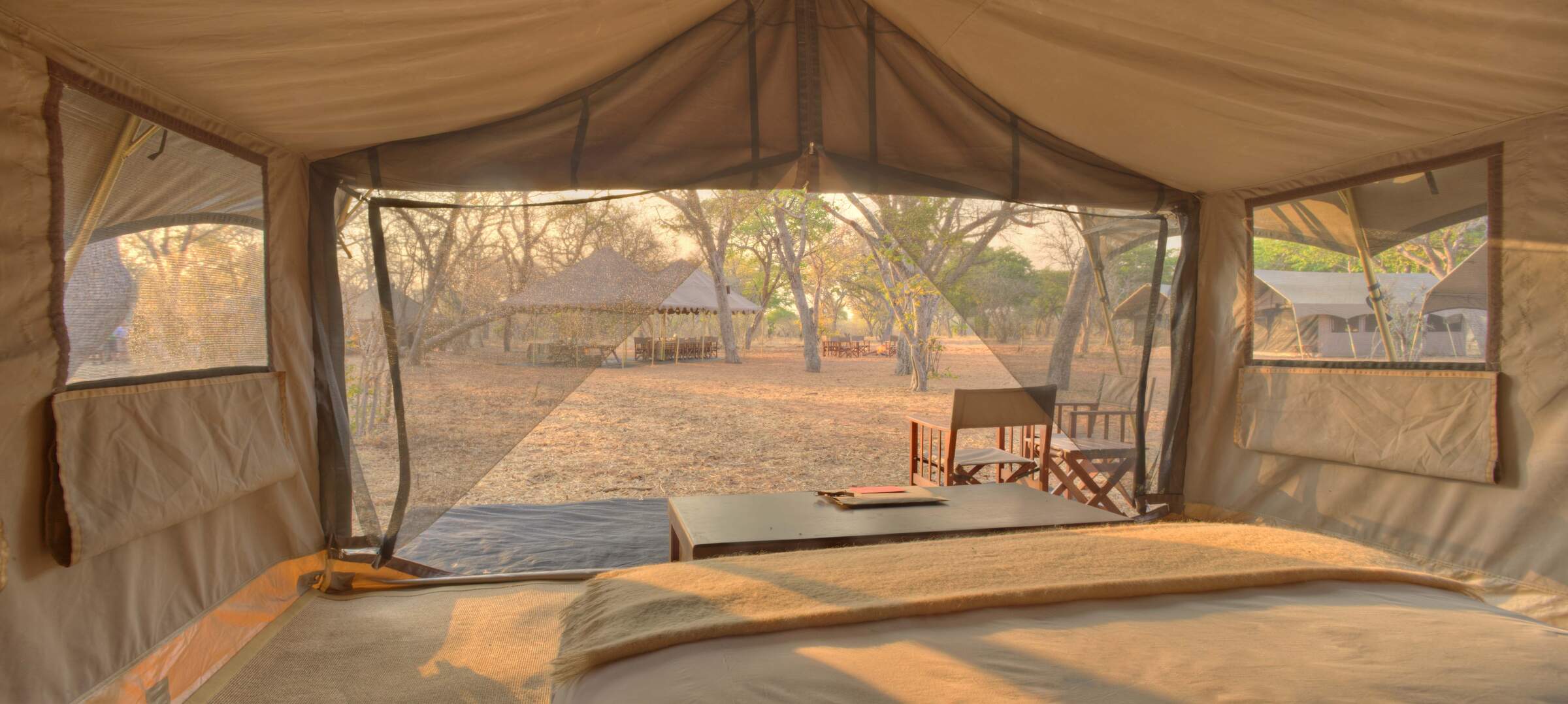
Chobe Under Canvas
The Chobe Riverfront is not just about the 'big stuff': it's also a superb destination for birdwatching. Over 450 species of birds have been seen in Chobe, including African skimmers, found between about October and March.
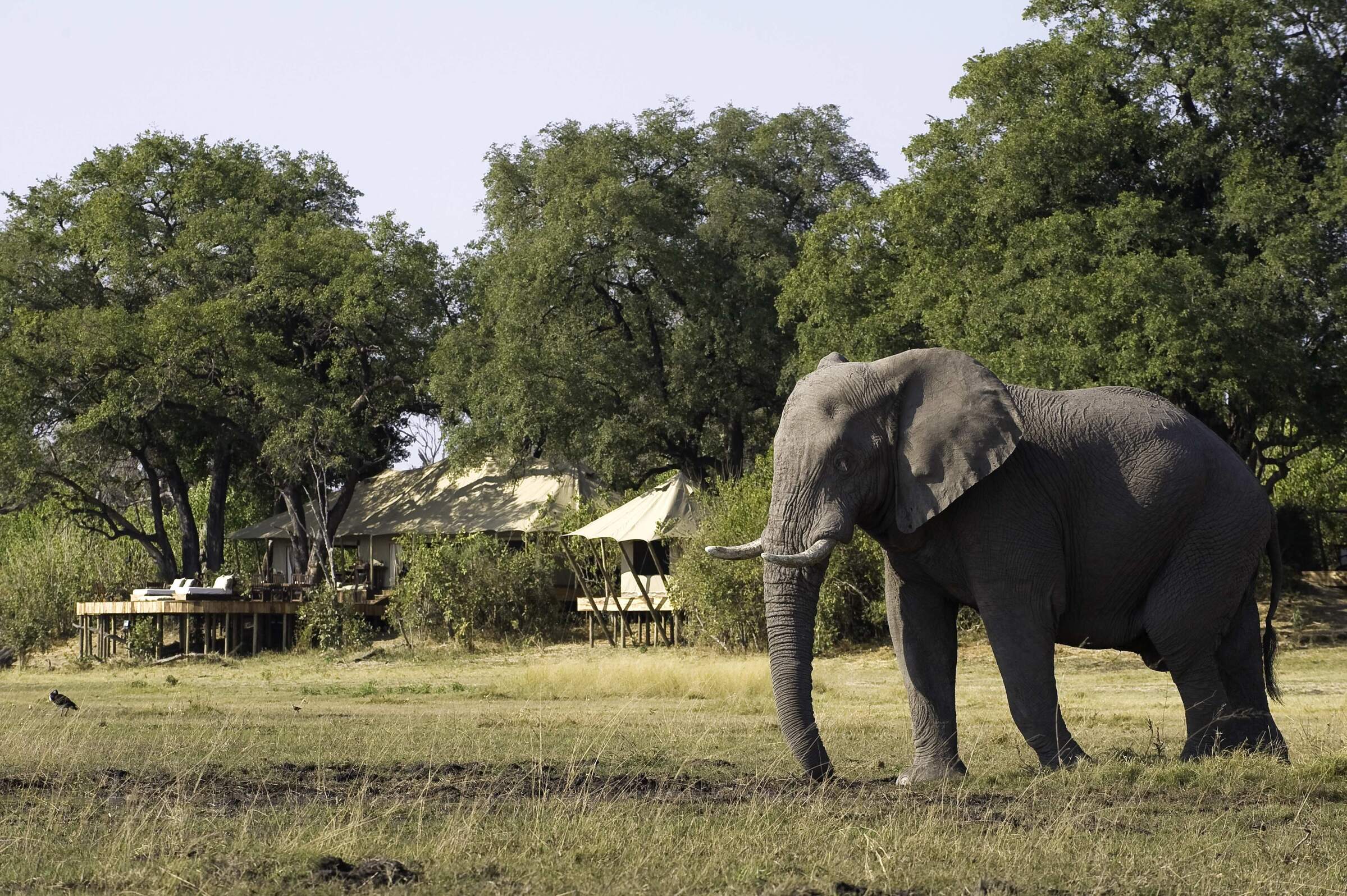
Zarafa Camp
Zarafa Camp is situated close to the Zibadianja Lagoon which is known for its colony of African Skimmers. Each tent comes with its own pair of Swarovski binoculars - a massive boon for anyone with a keen interest in birds.
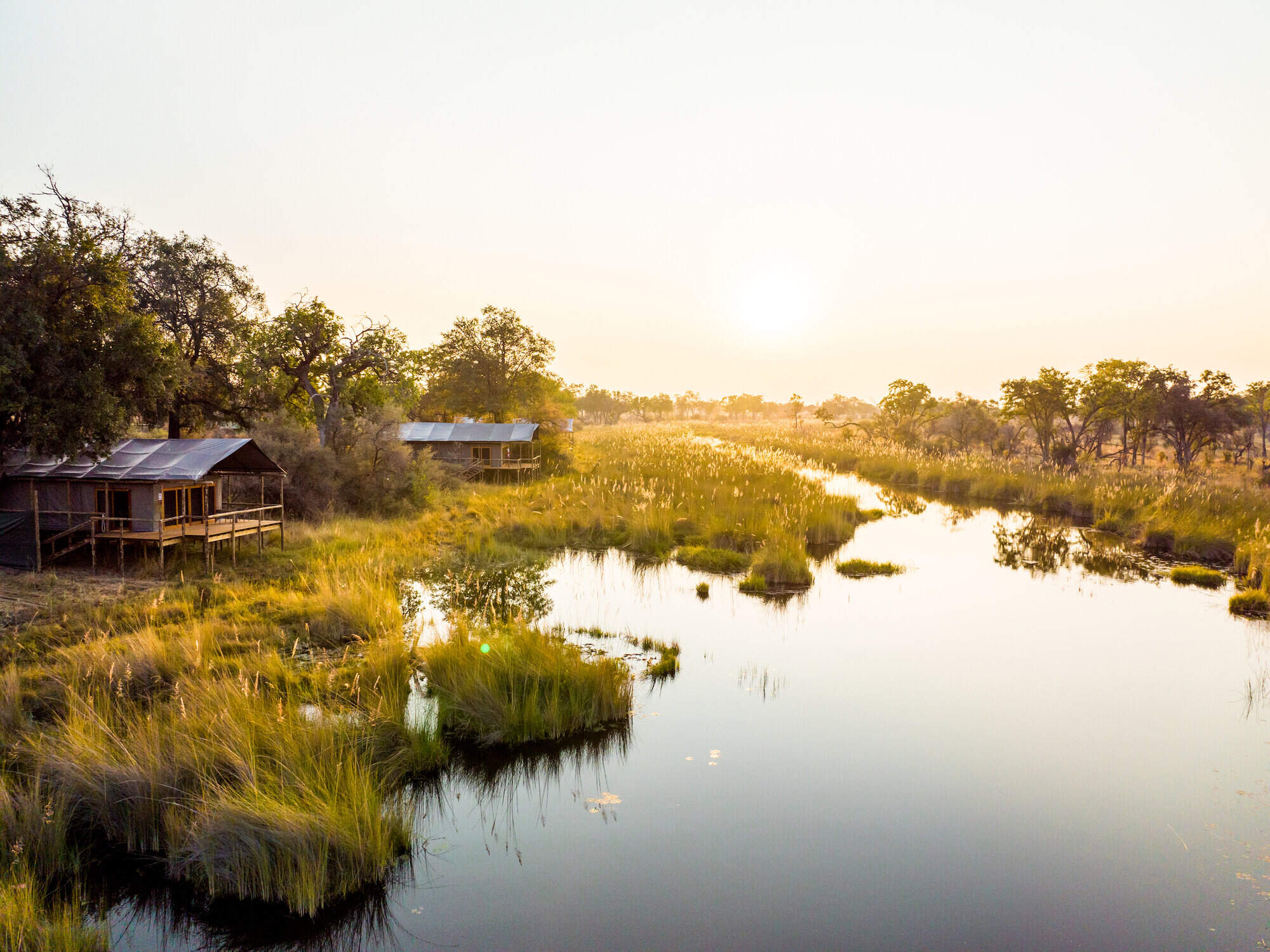
4 Rivers
The terrain surrounding 4 Rivers is home to a wide variety of vegetation making this camp an ideal location for birdwatchers in Botswana to see many of the Okavango’s almost 450 species of birdlife.
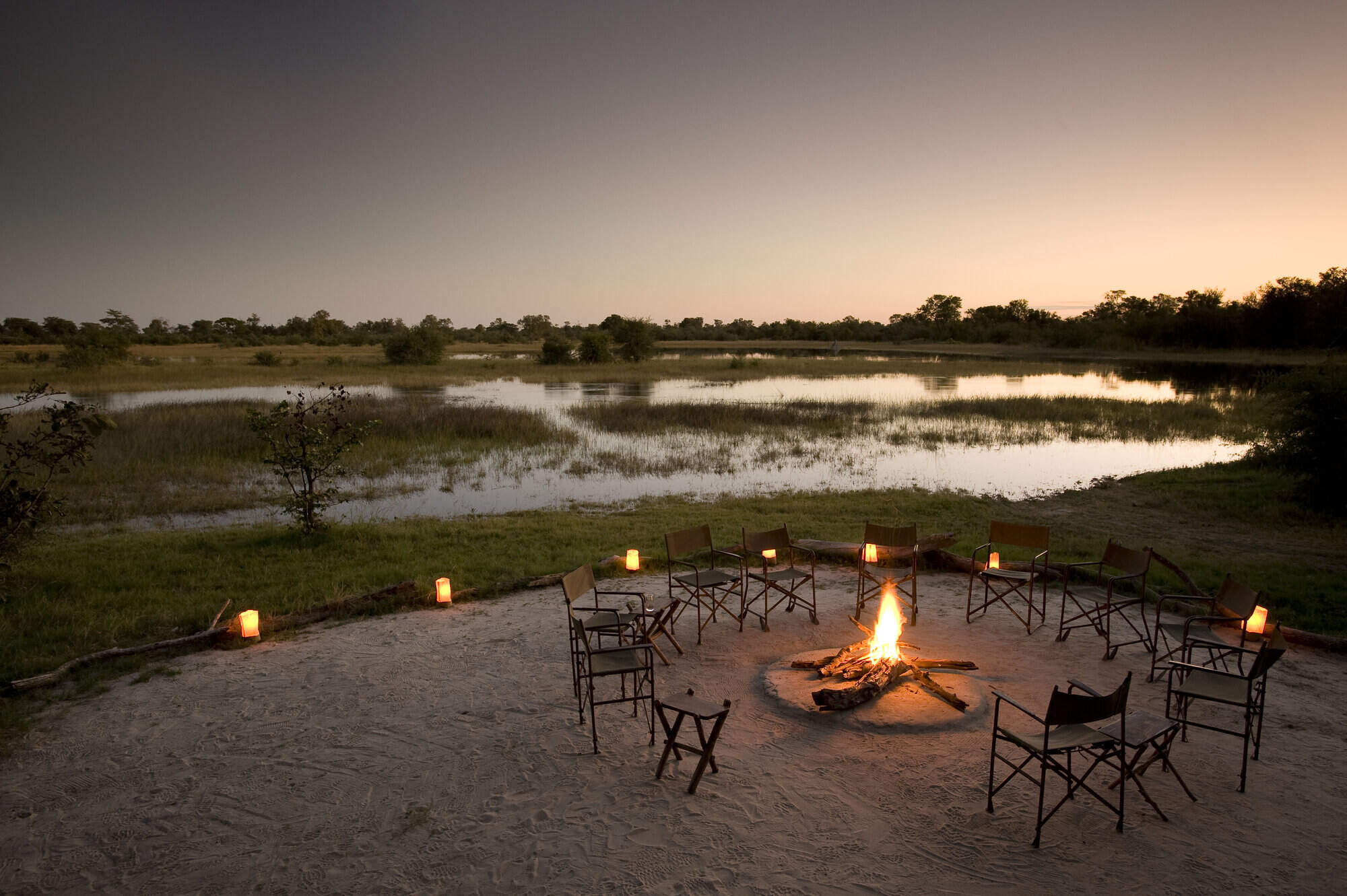
Okavango Explorers
Located on the banks of the seasonal Selinda Spillway the camp offers a great mix of waterbirds and woodland species, with plenty of raptors always around in this very wild area.
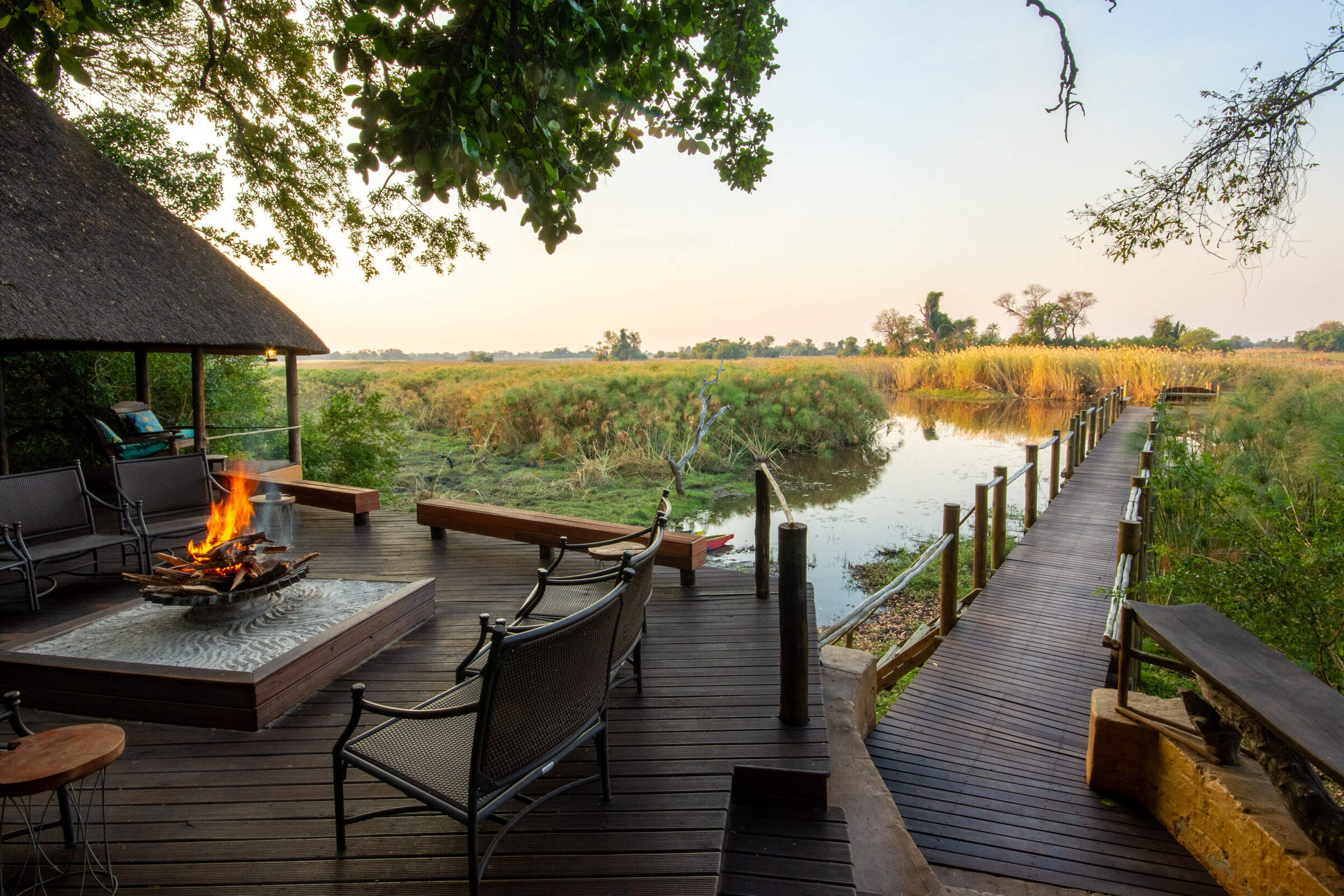
Nxamaseri Lodge
Relatively near the Okavango's main channel, Nxamaseri Lodge makes an excellent choice for a birdwatching holiday in the Okavango Delta, with a deep-water lagoon environment.
Birdwatching elsewhere in Africa
Our top ideas and inspiration for Birdwatching in other countries.
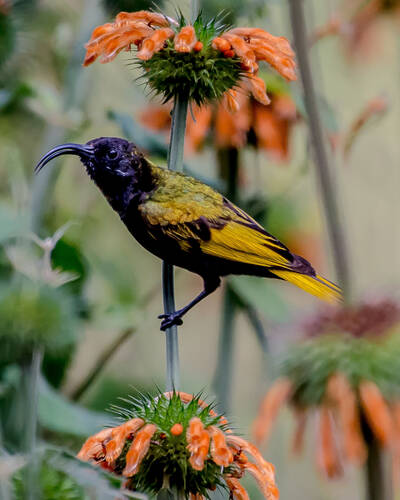
Kenya
Kenya is a prime destination for a birdwatching holiday at any time of year. Tremendous geographical ...
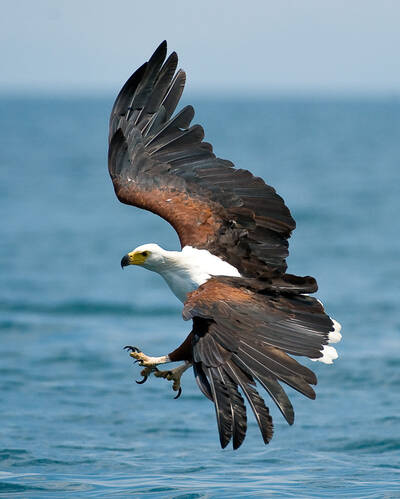
Malawi
Malawi has a number of species which are rare in the rest of Southern Africa, and birdwatching ...
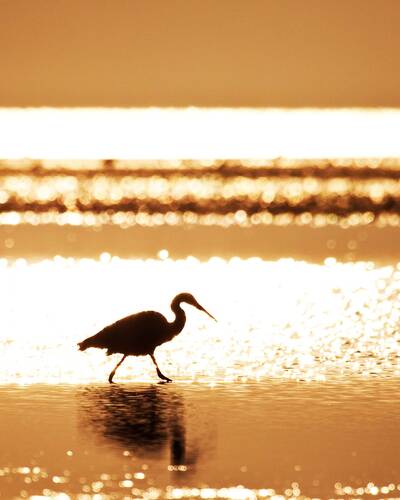
Mozambique
Mozambique stretches over 2000km from north to south. It is a lush and varied country, and birding ...
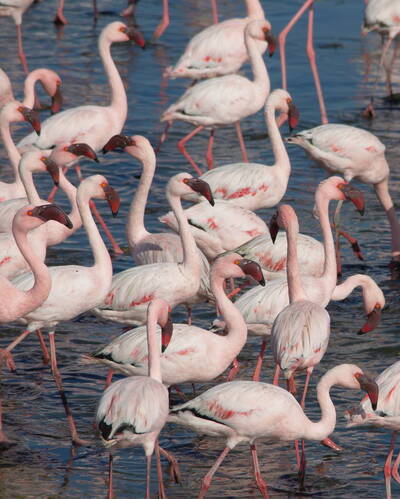
Namibia
The best time for bird watching in Namibia is during the rains - typically between around November ...
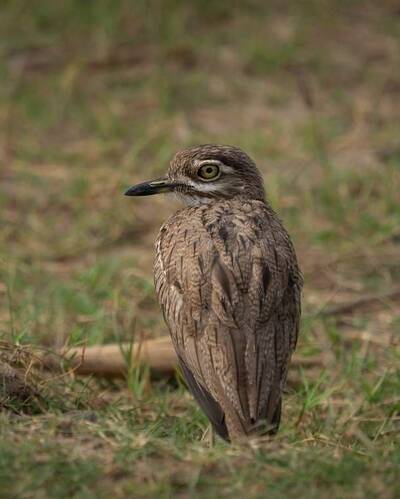
Rwanda
Birdwatching in Rwanda is somewhat overlooked in favour of gorilla-trekking trips. However, birdlife ...
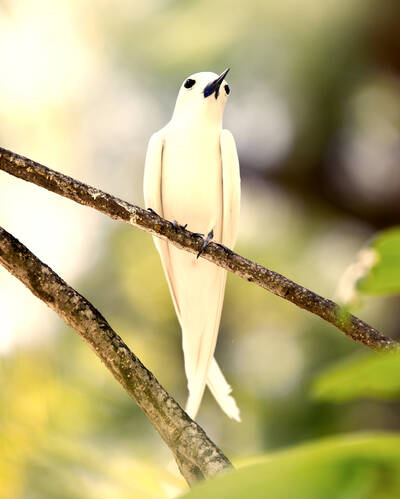
Seychelles
The Seychelles is a disparate group of islands - some granitic; some coralline - scattered around ...
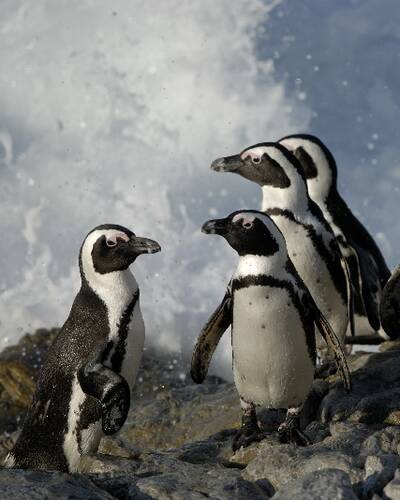
South Africa
South Africa has the highest number of endemic bird species in mainland Africa. Birding in the ...
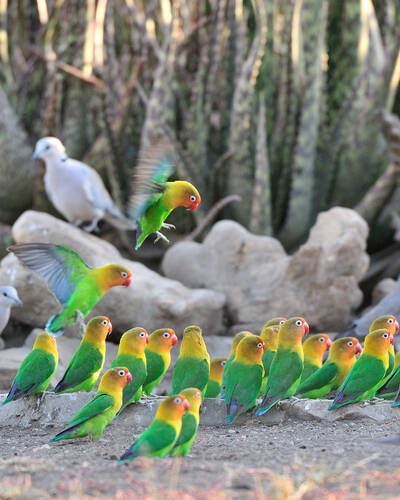
Tanzania
With a range of endemic bird species, Tanzania is a great location for a birdwatching holiday. ...
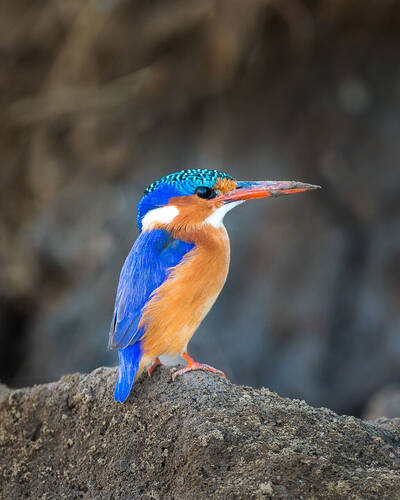
Zambia
Birdwatching in Zambia will reveal a mix of south, east and even central African birds. Birdlife ...
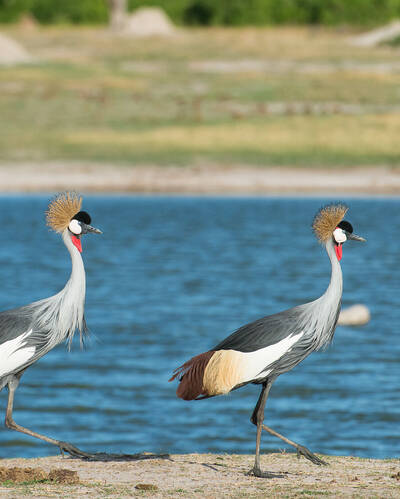
Zimbabwe
Whilst Zimbabwe doesn't have any endemics, it's still great for bird watching. A Zimbabwe holiday ...
Where to see wildlife species in Botswana
Maximise the chances of seeing your favourite animals based on traveller sightings reports from the field.
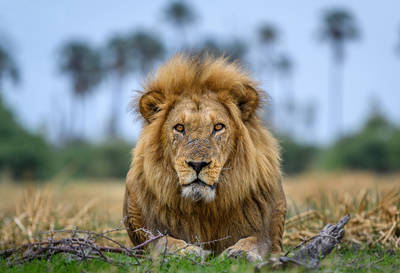
Lion
Panthera leo
Lions are at the top of the food chain and also most safari wish-lists, but with their numbers falling fast, any encounter with these majestic apex predators always feels like a privilege.
81% SUCCESS
3,674 sightings from 4,539 observations
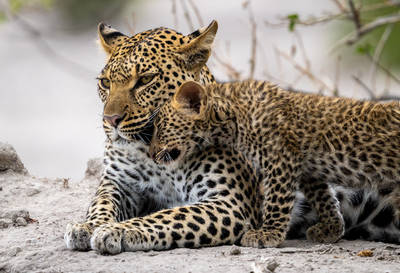
Leopard
Panthera pardus
The most numerous of Africa’s big cats, leopard occur across many habitats, from wild tracts to populated areas. Their grace and their elusive nature make them a unique safari drawcard.
47% SUCCESS
2,370 sightings from 5,037 observations
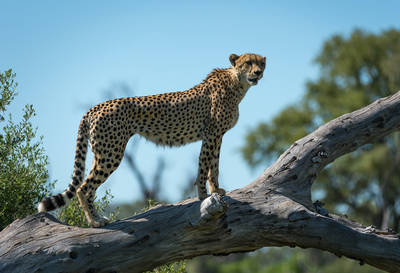
Cheetah
Acinonyx jubatus
The cheetah is the fastest land animal and the only cat that hunts by pure speed. Found largely in open grasslands, its slim, elegant form is today an increasingly rare sight.
33% SUCCESS
1,289 sightings from 3,855 observations
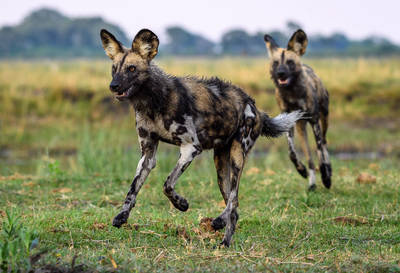
Wild dog
Lycaon pictus
African wild dogs are among the continent’s most compelling animals. Much misunderstood, these rare, tie-dyed canids are amazingly efficient hunters with a fascinating social life.
32% SUCCESS
1,049 sightings from 3,322 observations
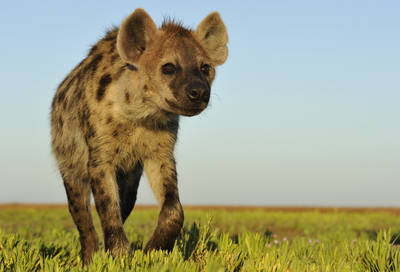
Spotted Hyena
Crocuta crocuta
The spotted hyena may be thought of as ‘ugly’ and ‘cowardly’. In fact, this versatile and intelligent carnivore is one of Africa’s most fascinating and warrants attention on any safari.
55% SUCCESS
2,632 sightings from 4,798 observations
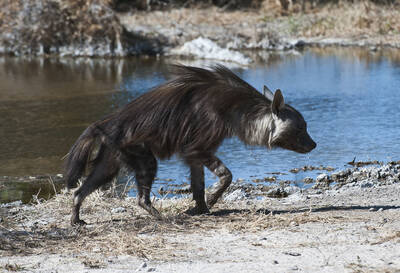
Brown Hyena
Parahyaena brunnea
This largely solitary scavenger is one of the more elusive and little-known of Africa’s carnivores. Shaggier than its spotted cousin, it occurs only in the arid southwest of the continent.
16% SUCCESS
292 sightings from 1,867 observations
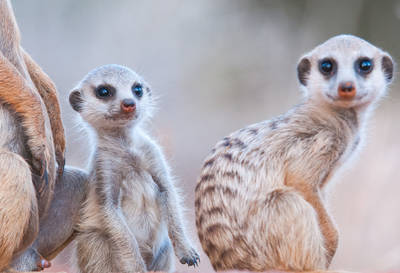
Meerkat
Suricata suricatta
These highly sociable little mammals have an endearing appearance and comical antics. Found in the drier areas of Southern Africa, close encounters are a sought-after experience.
20% SUCCESS
103 sightings from 507 observations
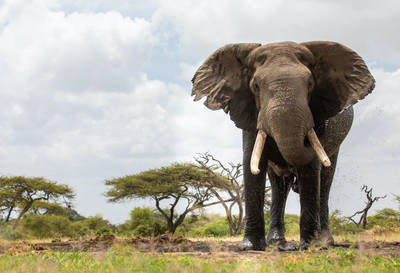
Elephant
Loxodonta africana
By far the biggest of the so-called Big Five – indeed, the largest land animal on the planet – the elephant shapes the very landscape it inhabits and is a defining presence on any safari.
91% SUCCESS
4,431 sightings from 4,871 observations
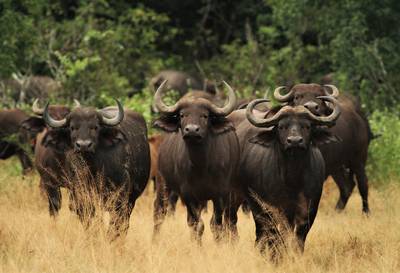
Buffalo
Syncerus caffer
One of the ‘Big Five’, buffalo earned a fearsome reputation in hunters’ tales. By contrast, big herds of these sociable bovids are placid, but mount formidable defences against predators.
83% SUCCESS
3,100 sightings from 3,738 observations
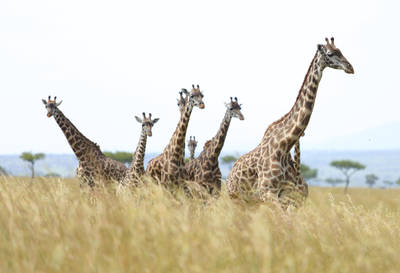
Giraffe
Giraffa camelopardalis
The world’s tallest land mammal, giraffes are herbivores which have evolved many unique adaptations. Their iconic outlines tower above the bush in many of Africa’s wildlife areas.
86% SUCCESS
4,282 sightings from 4,994 observations
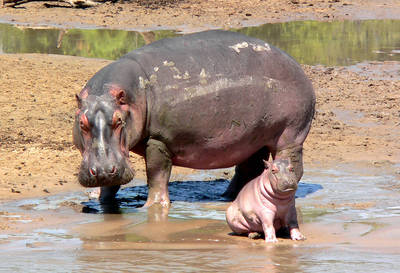
Hippo
Hippopotamus amphibius
The territorial calls of the hippo create a signature soundtrack to Africa’s rivers & wetlands. Despite an endearing smile, this aquatic herbivore has a notoriously aggressive disposition.
89% SUCCESS
3,224 sightings from 3,619 observations
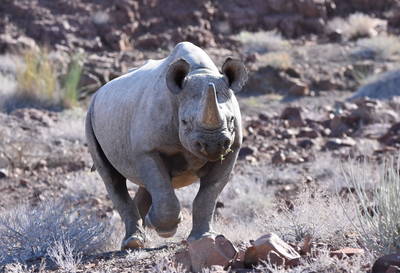
Black Rhino
Diceros bicornis
The black rhino is the smaller and rarer of Africa’s two rhino species but has the more fearsome reputation. Shy and heavily persecuted, it tends to stick to cover.
30% SUCCESS
758 sightings from 2,501 observations
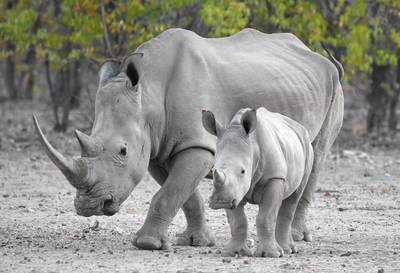
White Rhino
Ceratotherium simum
The white rhino is the largest and most numerous of the world’s five rhinoceros species. They are larger, easier to see and generally more approachable than the black rhino.
44% SUCCESS
618 sightings from 1,417 observations
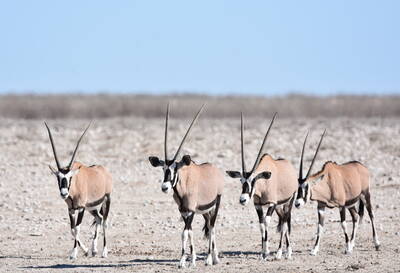
Oryx
Oryx sp.
Oryx are impressive antelopes, with a powerful physique and elegant markings set off by rapier-like horns. They cut a distinctive dash in some of Africa’s harshest landscapes.
69% SUCCESS
1,614 sightings from 2,334 observations
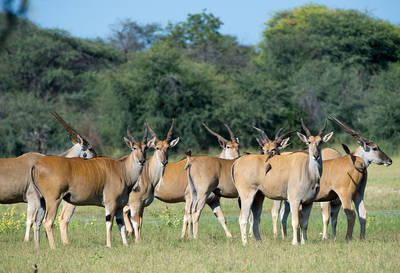
Eland
Taurotragus oryx
Africa’s largest antelope, eland are culturally important from prehistoric rock art to modern game farms. Though widespread, they are also shy so sightings are uncommon and often fleeting.
49% SUCCESS
1,768 sightings from 3,572 observations
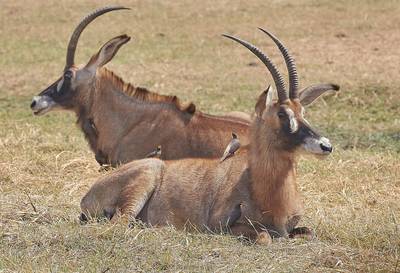
Roan antelope
Hippotragus equinus
Africa’s second largest antelope and one of its most handsome, with a powerful build and distinctive markings, roan are wary of people, but renowned for their bravery against predators.
25% SUCCESS
601 sightings from 2,430 observations
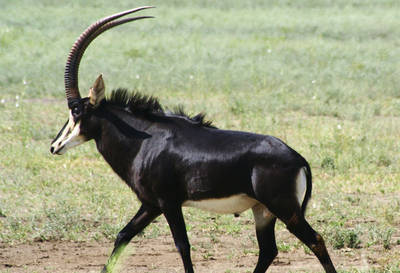
Sable antelope
Hippotragus niger
Perhaps Africa’s most beautiful antelope, sable are renowned for their combative nature, even holding off lions. Shy and restricted in range, sightings of sable are always special.
24% SUCCESS
578 sightings from 2,440 observations
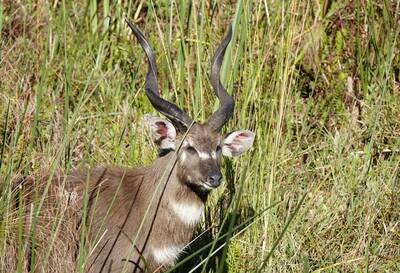
Sitatunga
Tragelaphus spekii
The sitatunga is the most aquatic of Africa’s antelopes and specially adapted to its swampy habitats. Though widespread across Africa, only a handful of places offer reliable sightings.
19% SUCCESS
78 sightings from 407 observations
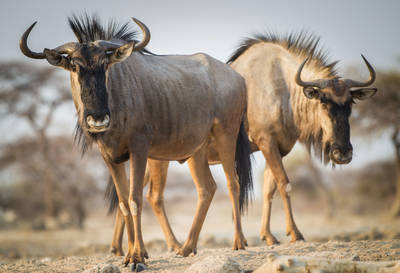
Wildebeest
Connochaetes sp.
Superficially bovine in appearance, wildebeests are known for their spectacular migrations sometimes in huge numbers. These resilient animals are some of Africa’s most successful herbivores.
68% SUCCESS
3,008 sightings from 4,452 observations
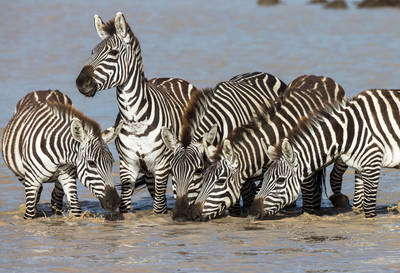
Zebra
Equus sp.
The zebra is a quintessential African animal: the horse in stripy pyjamas at the end of every child’s A–Z. There are three species, of which the plains zebra is much the most common.
84% SUCCESS
4,654 sightings from 5,533 observations
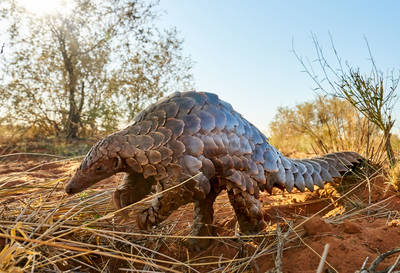
Pangolin
Smutsia sp.
Pangolins appear to be more pine cone than animal in their unique armoury of scales. These nocturnal, ant-eating oddities are not only highly elusive but also increasingly rare.
2% SUCCESS
70 sightings from 4,029 observations
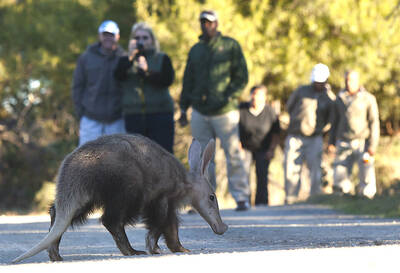
Aardvark
Orycteropus afer
The aardvark is one of Africa’s most bizarre and enigmatic animals. A shy, nocturnal termite-eater, signs of its presence may be scattered about the bush whilst sightings remain elusive.
2% SUCCESS
82 sightings from 3,987 observations

Looking for inspiration on where to travel next?
Visit our trip chooser to explore your options and find inspiration for your perfect African adventure
Inspire meOther styles of holiday in Botswana
Discover all that Botswana has to offer
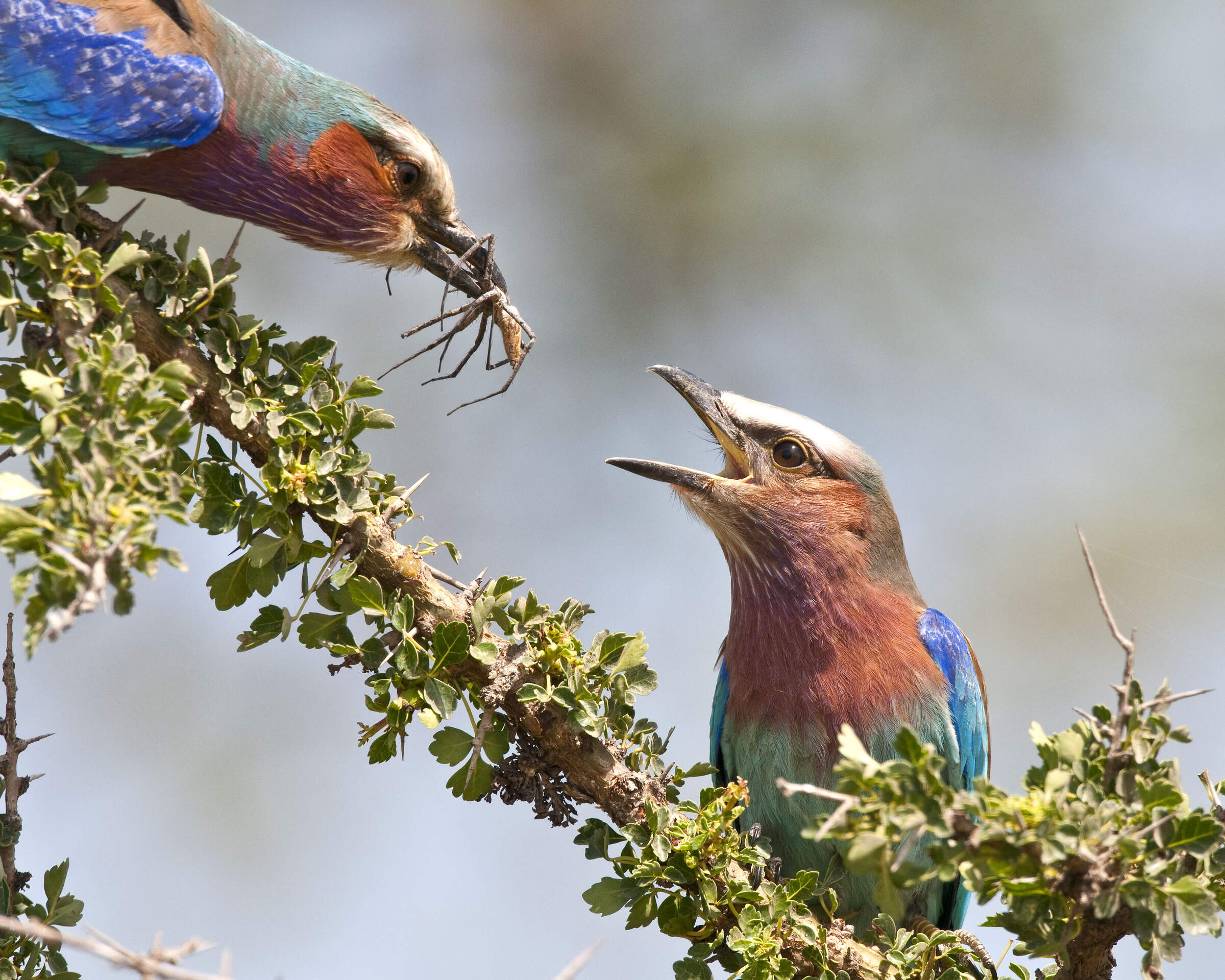
Birdwatching
Diverse habitats, discreet hides and superb guiding.
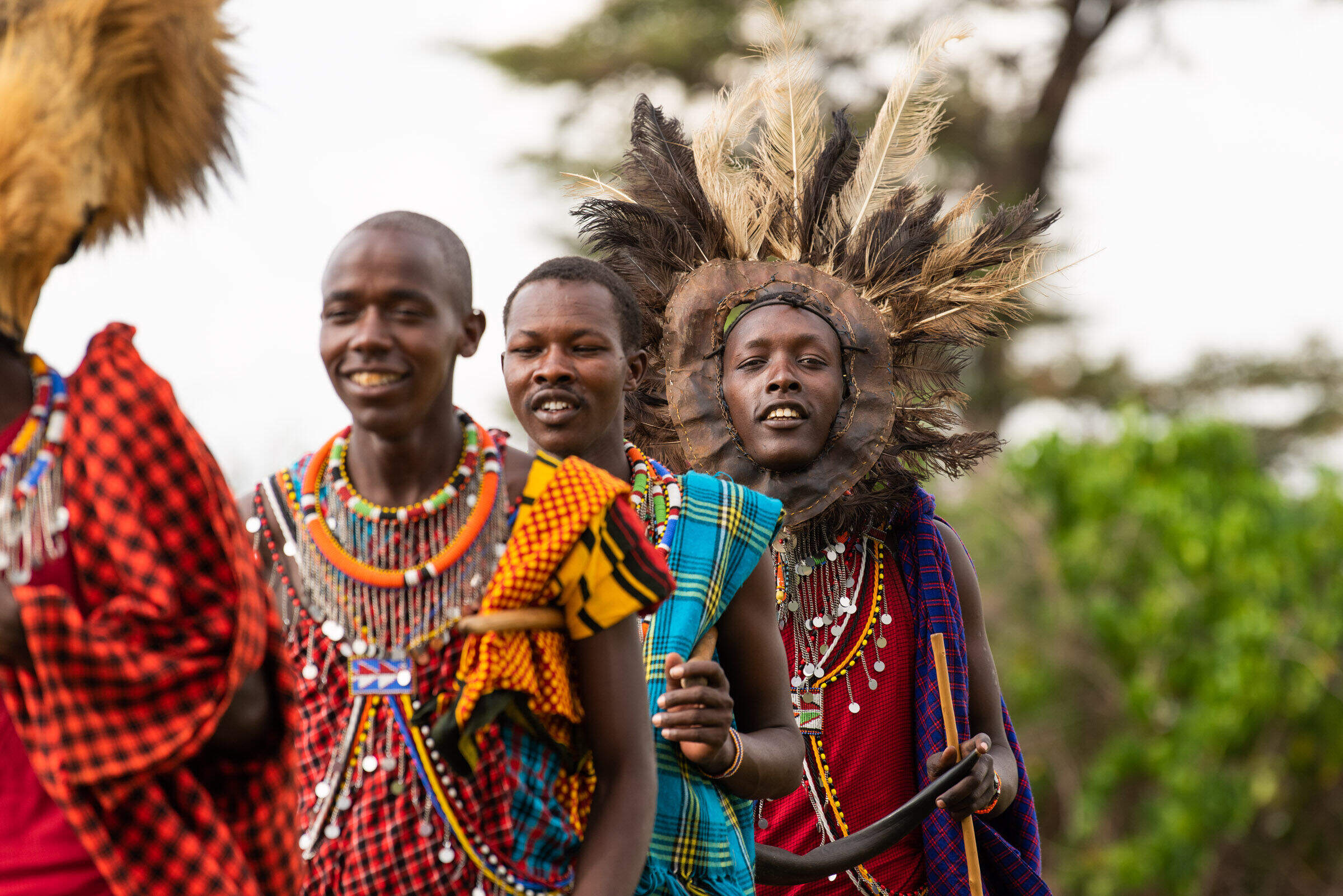
Cultural Experiences
Get authentic insight into Africa's cultures, communities and history.
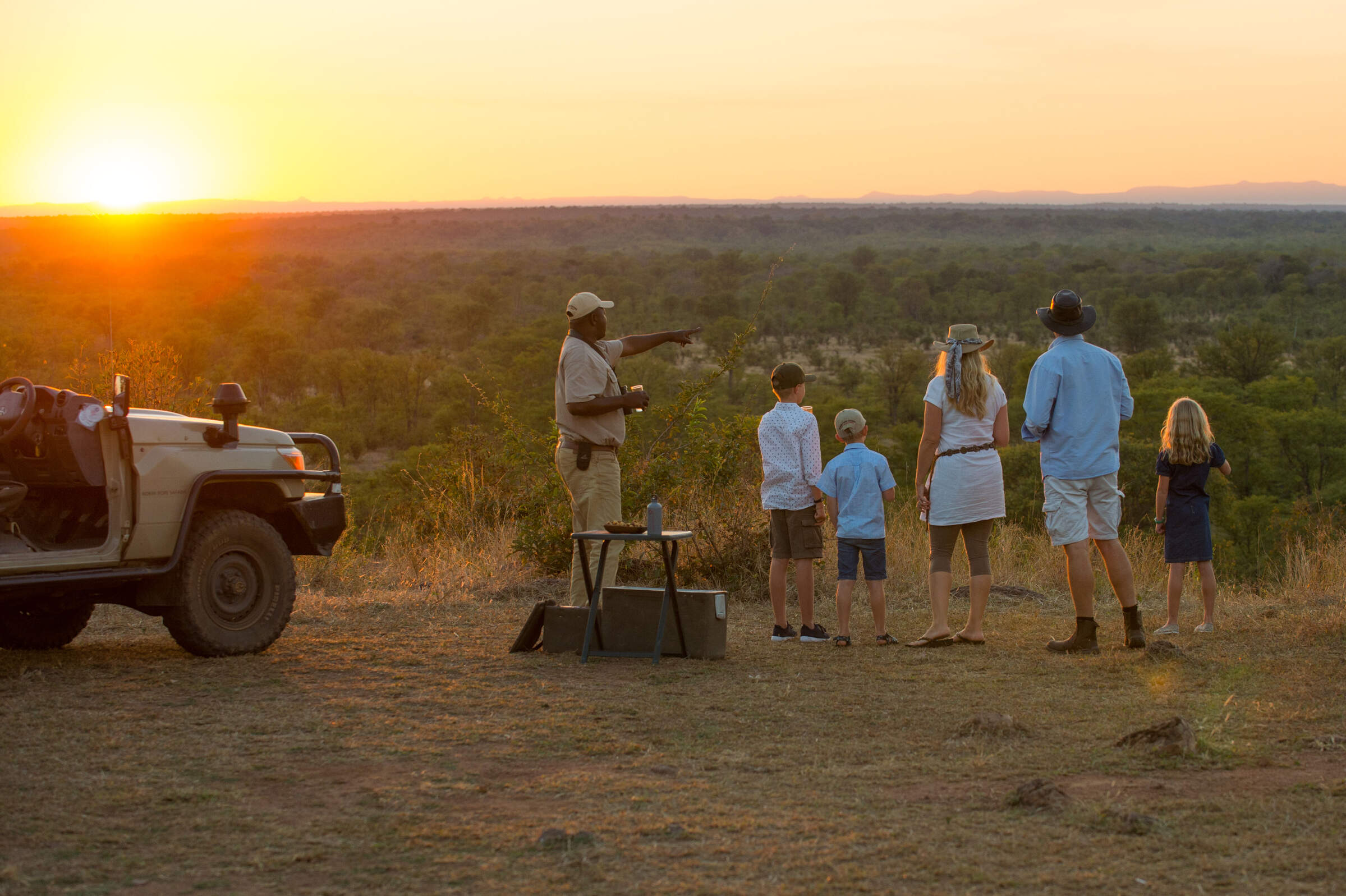
Family holidays
Our collection of incredible family safaris
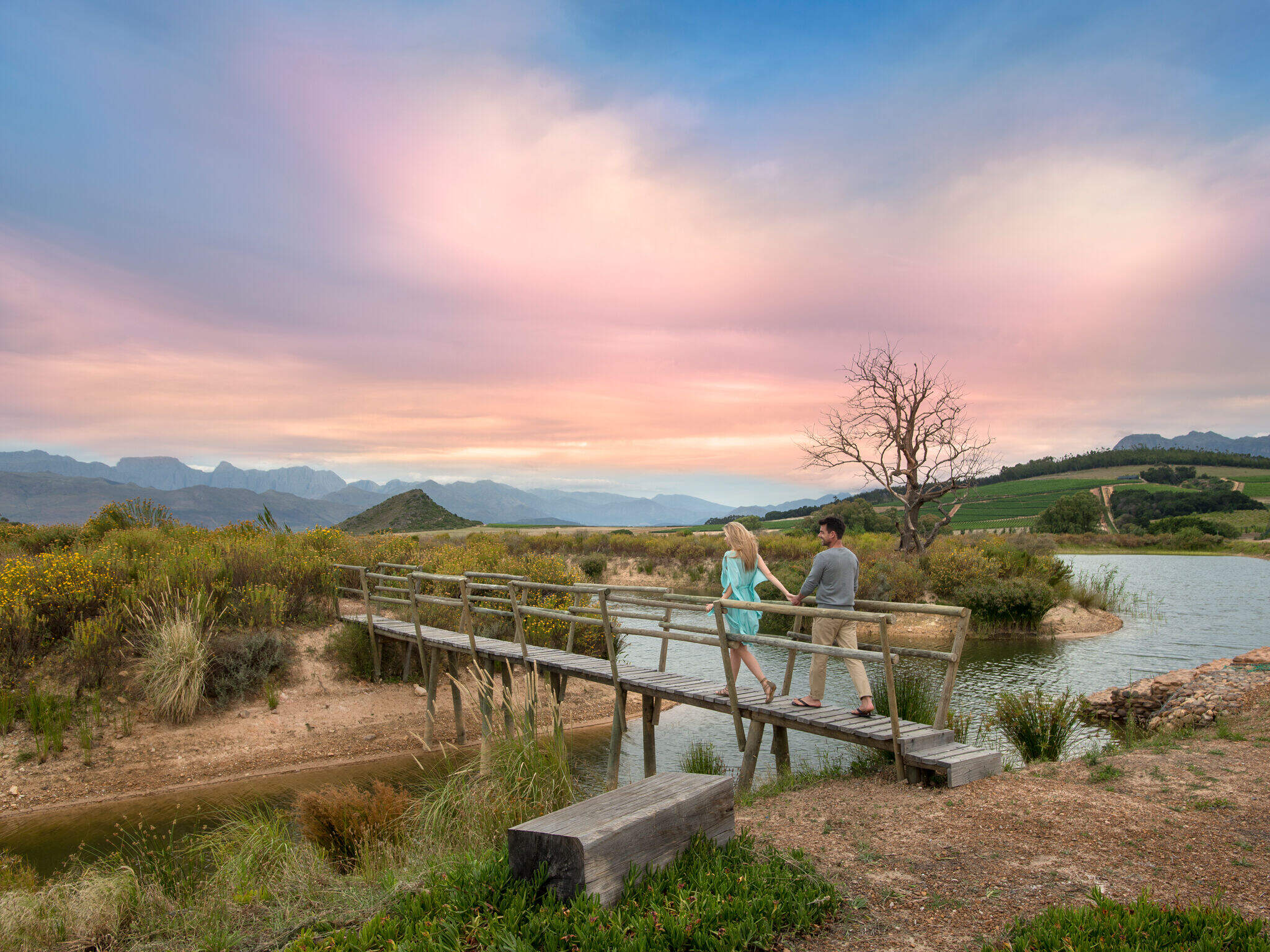
Honeymoons
Romantic safaris and castaway island retreats.
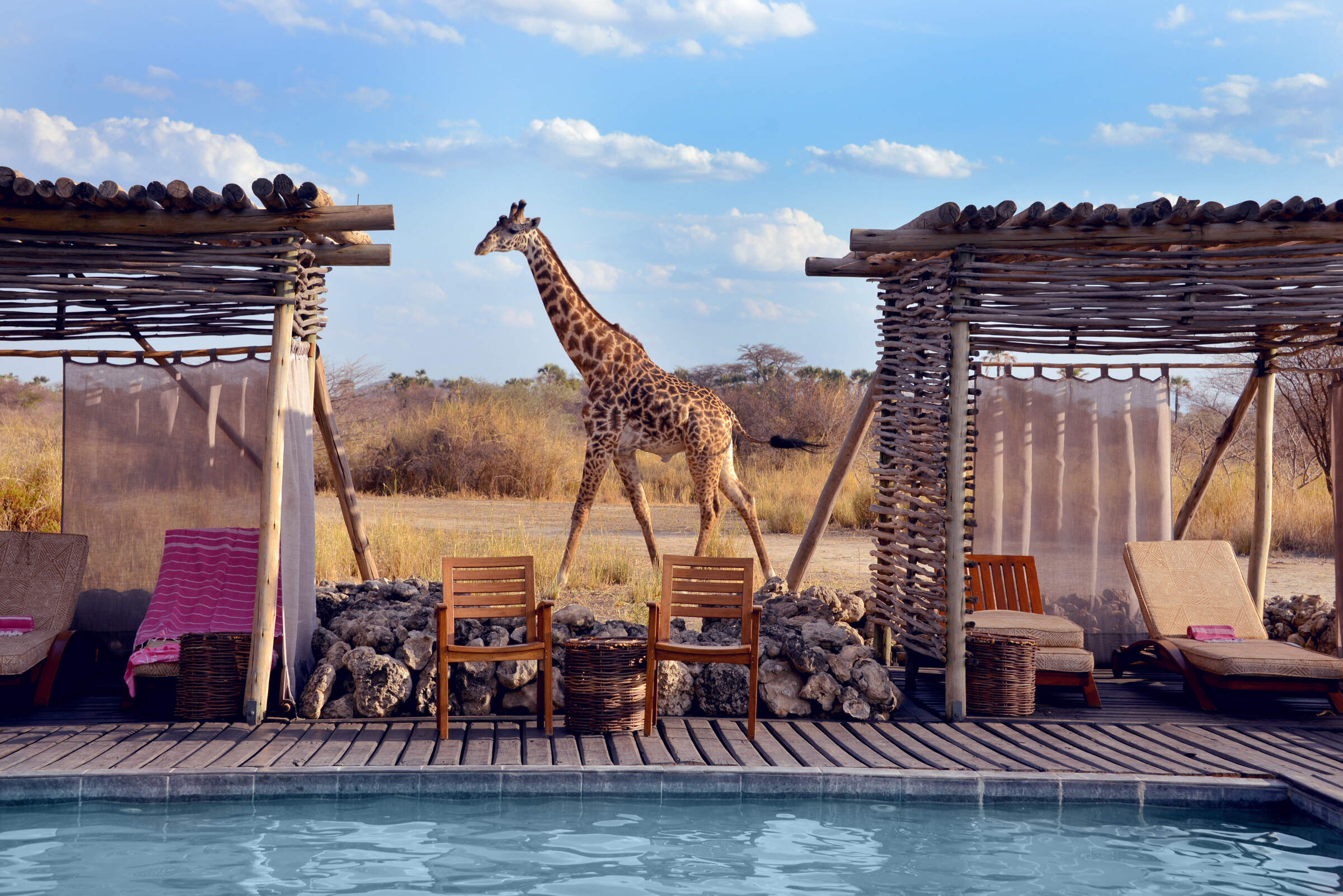
Luxury
First-class service, scenic vistas and unparalleled comfort await you during these carefully selected luxury holidays.
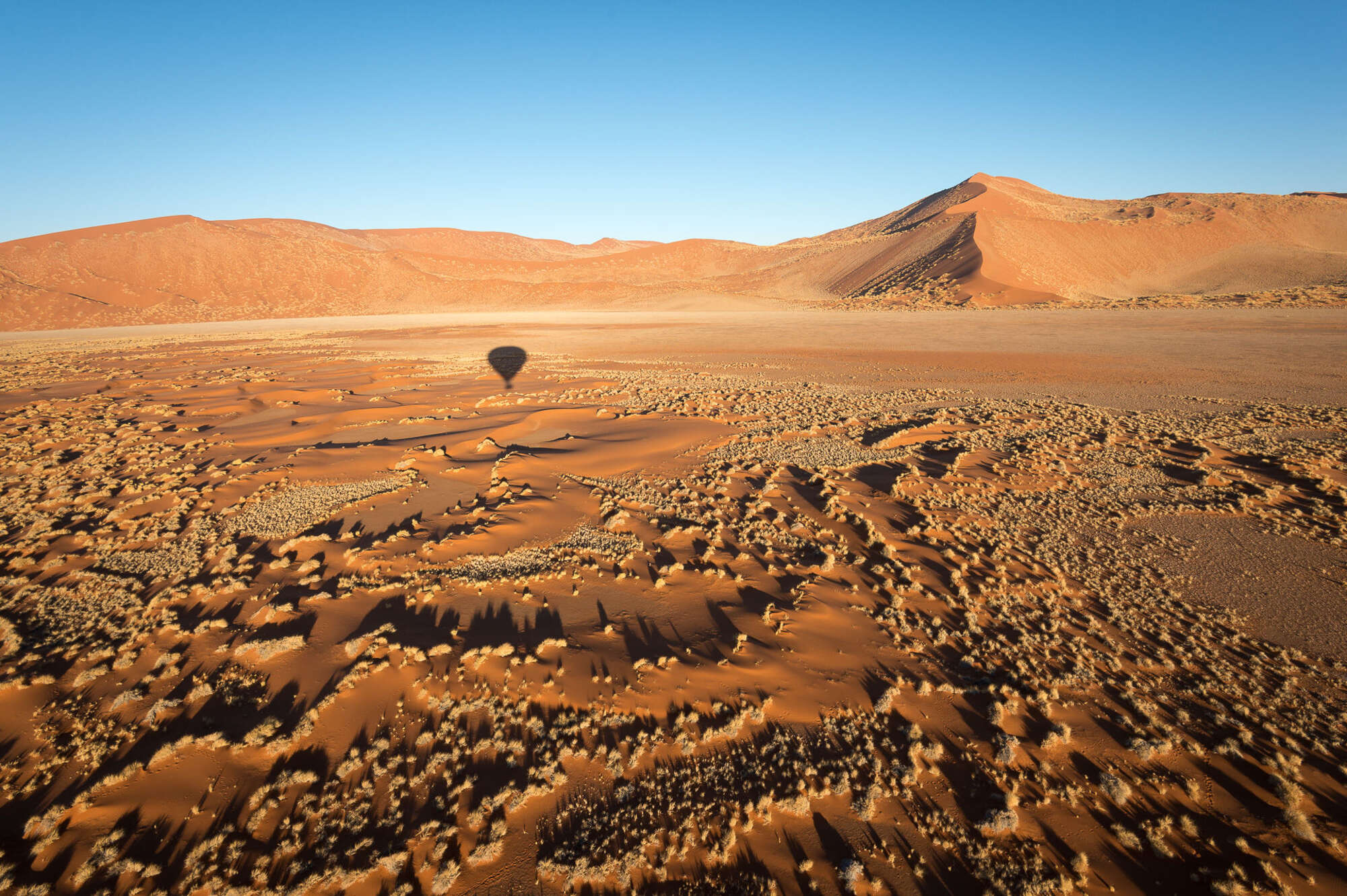
Photography holidays
Great holidays to suit the keen photographer.
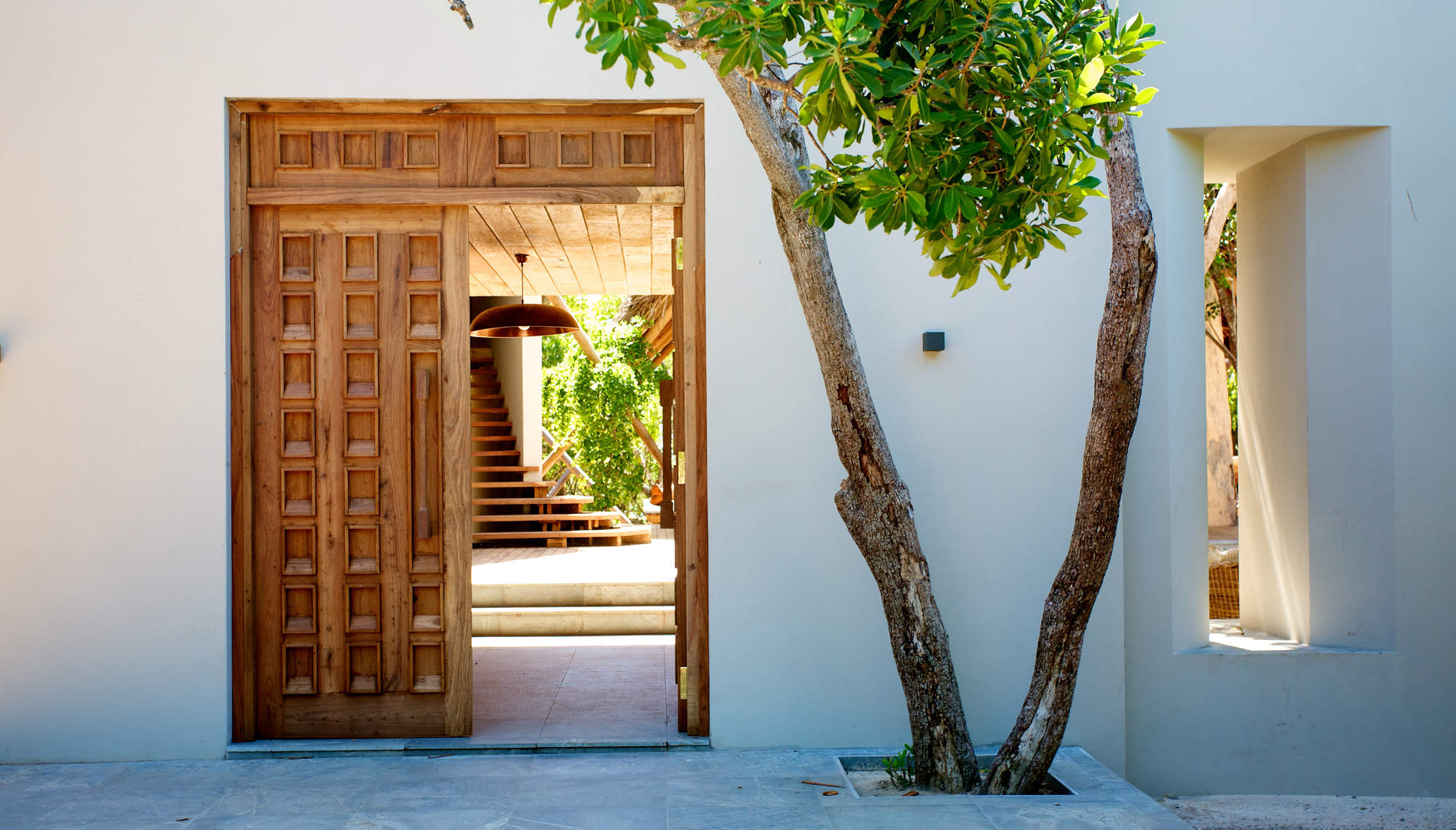
Private villas & houses
Enjoy Africa with just your friends & family
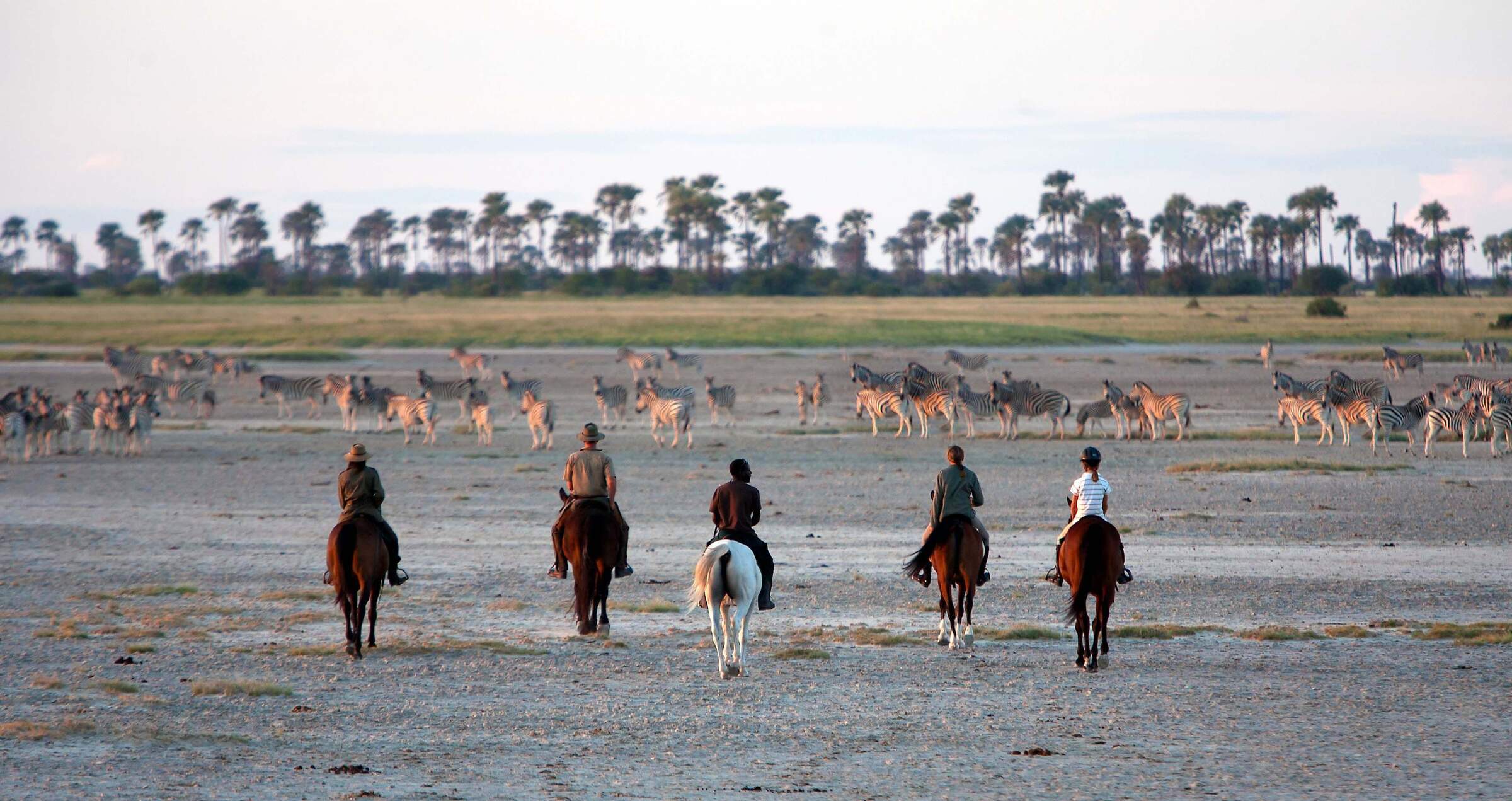
Riding holidays
Explore Africa's wilderness on horseback.
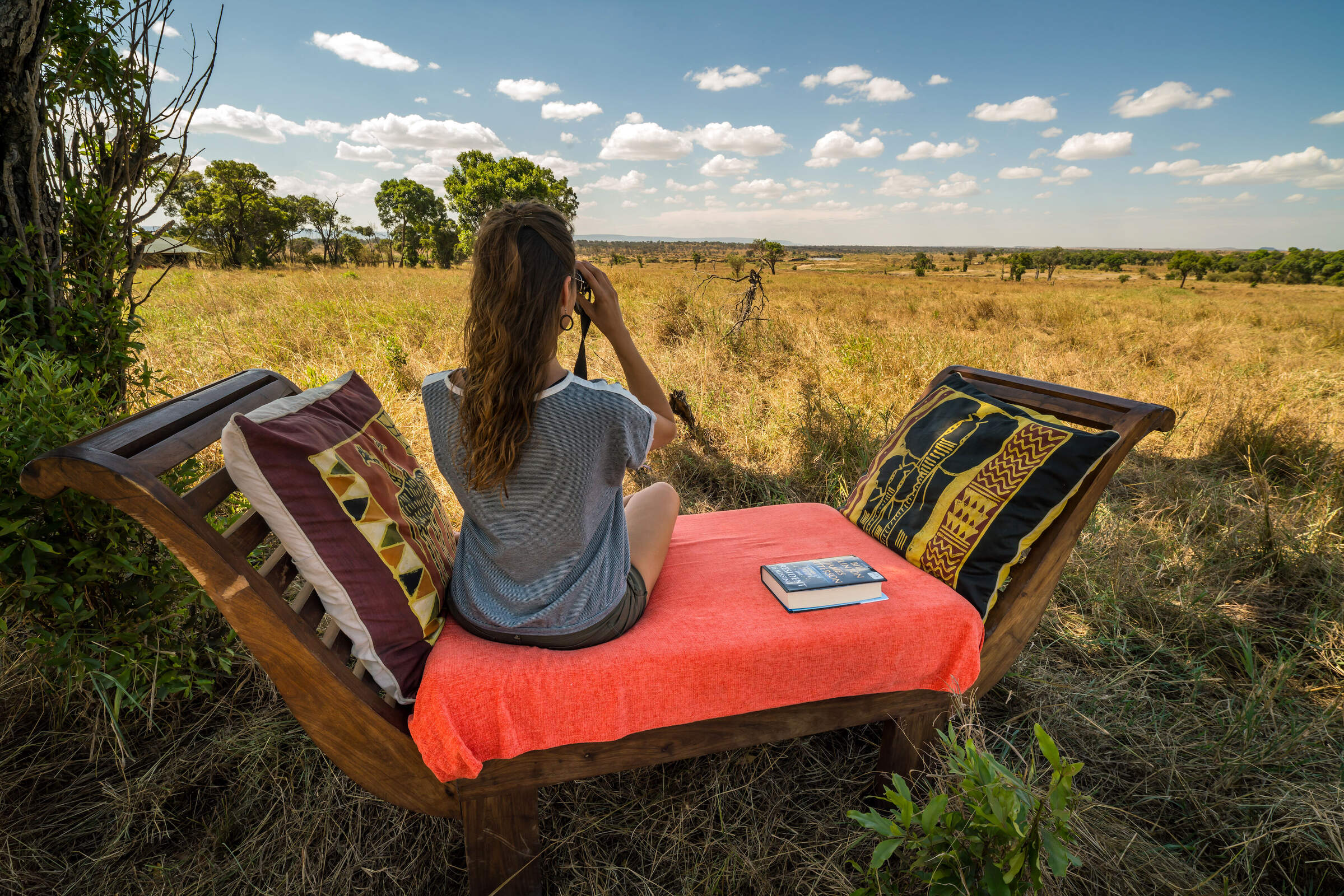
Solo safaris
Trip ideas ideally suited for a solo traveller.
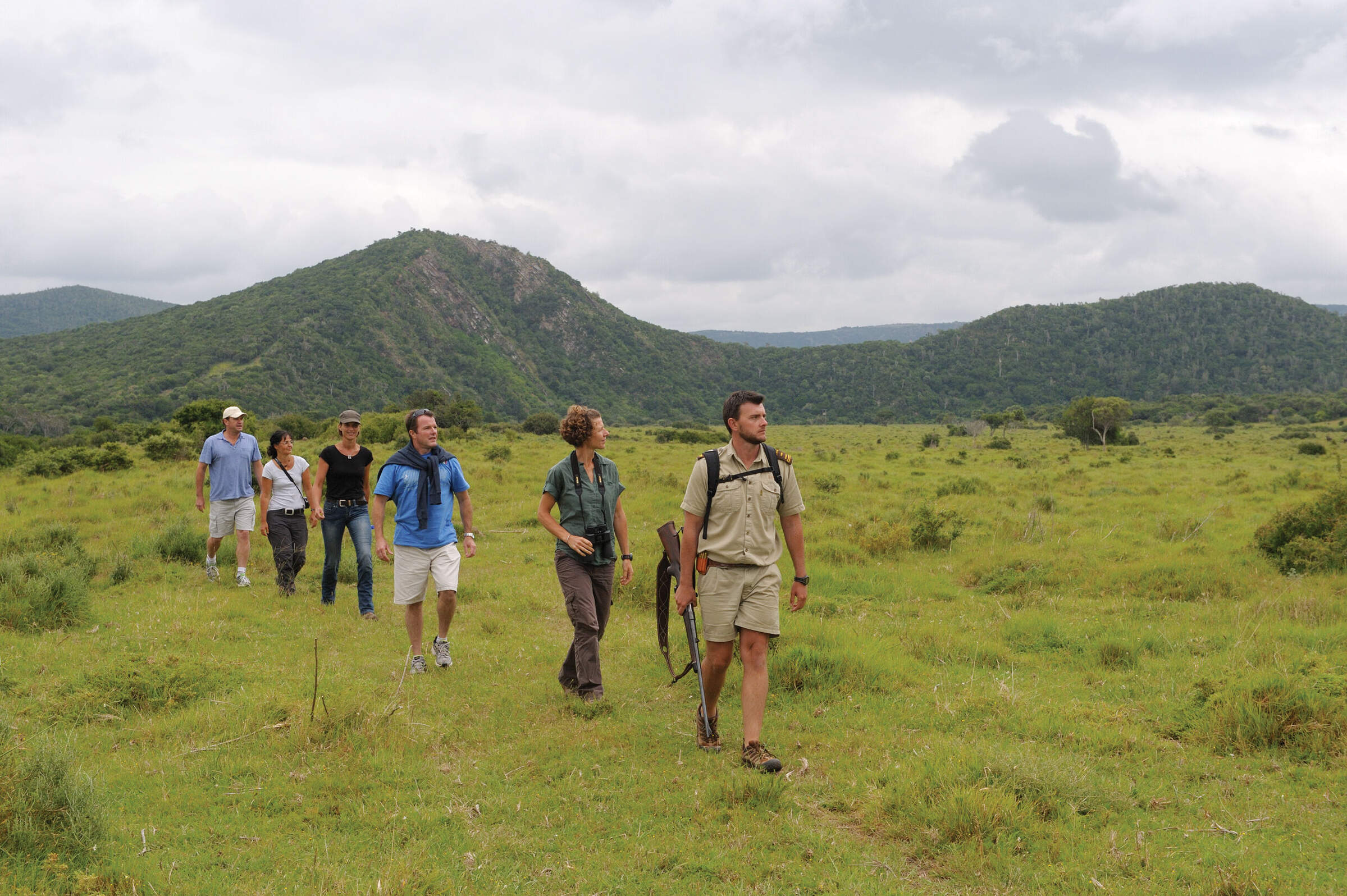
Walking
Explore Africa's most scenic hiking trails on foot, with or without a guide.
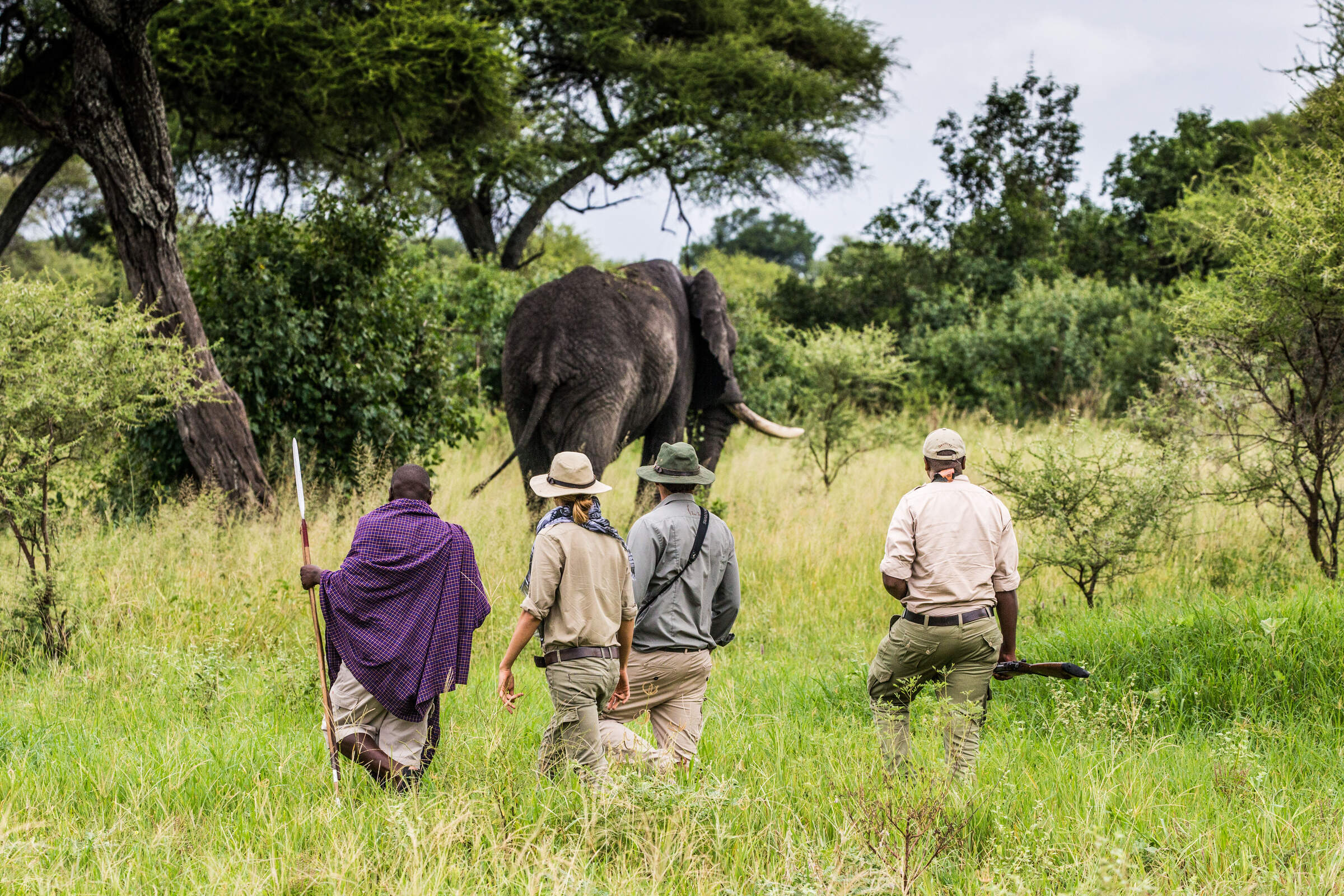
Walking safaris
Discover Africa's wildlife and wilderness on foot.
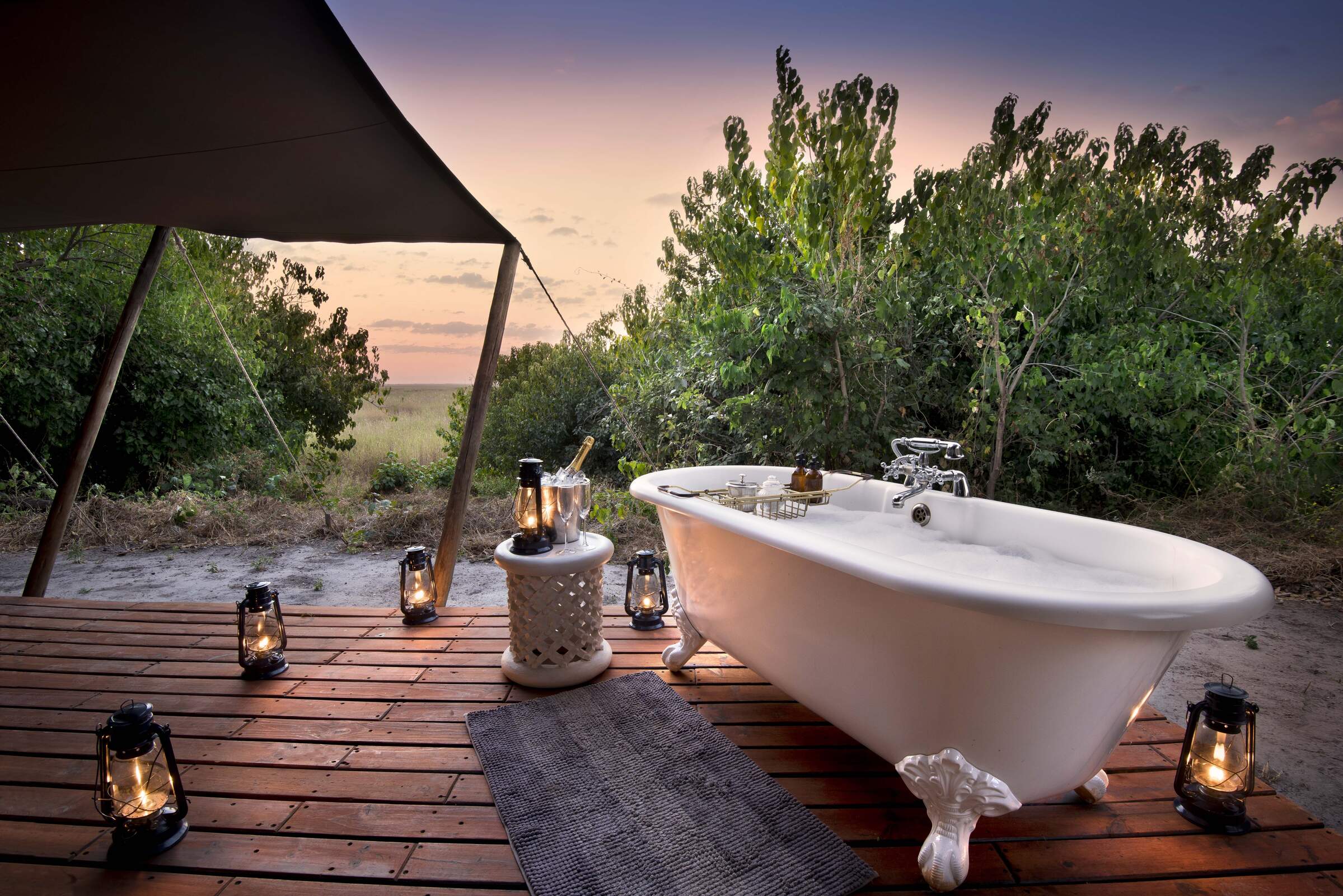
Wellbeing
Wellness escapes in stunning locations
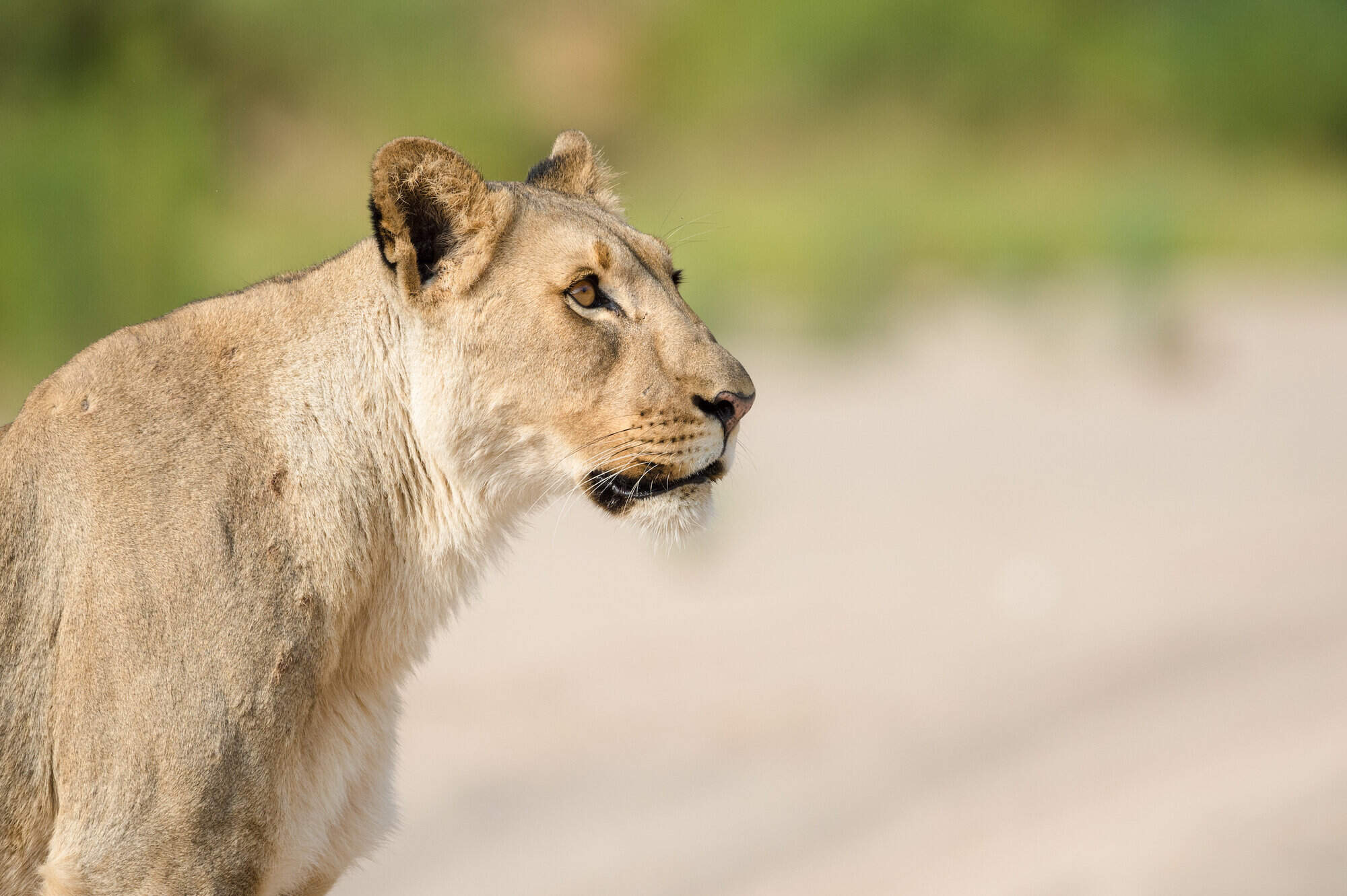
Wildlife safaris
These trips include incredible wildlife and elusive species, as well as superb guiding and a variety of diverse ecosystems.

